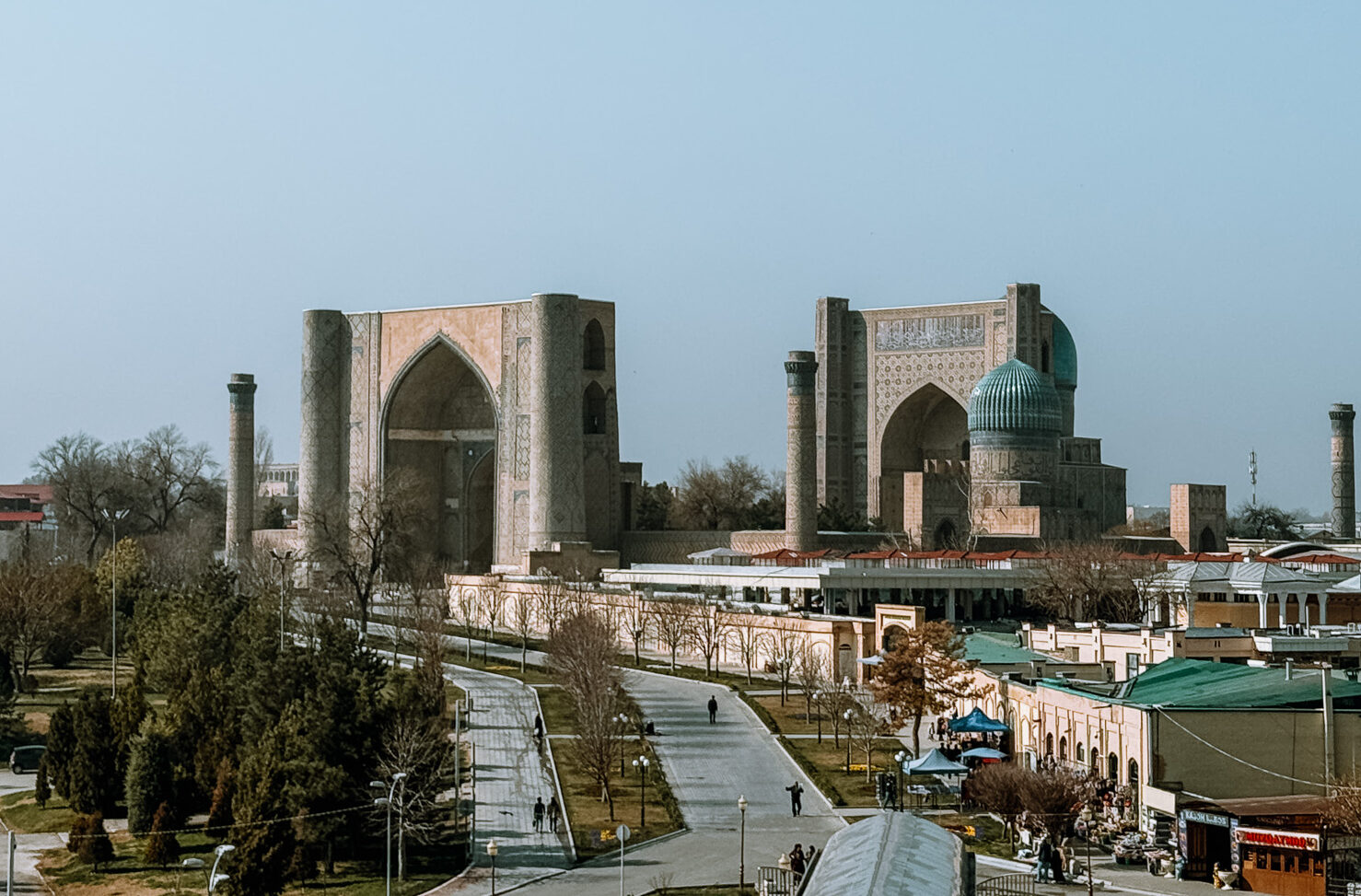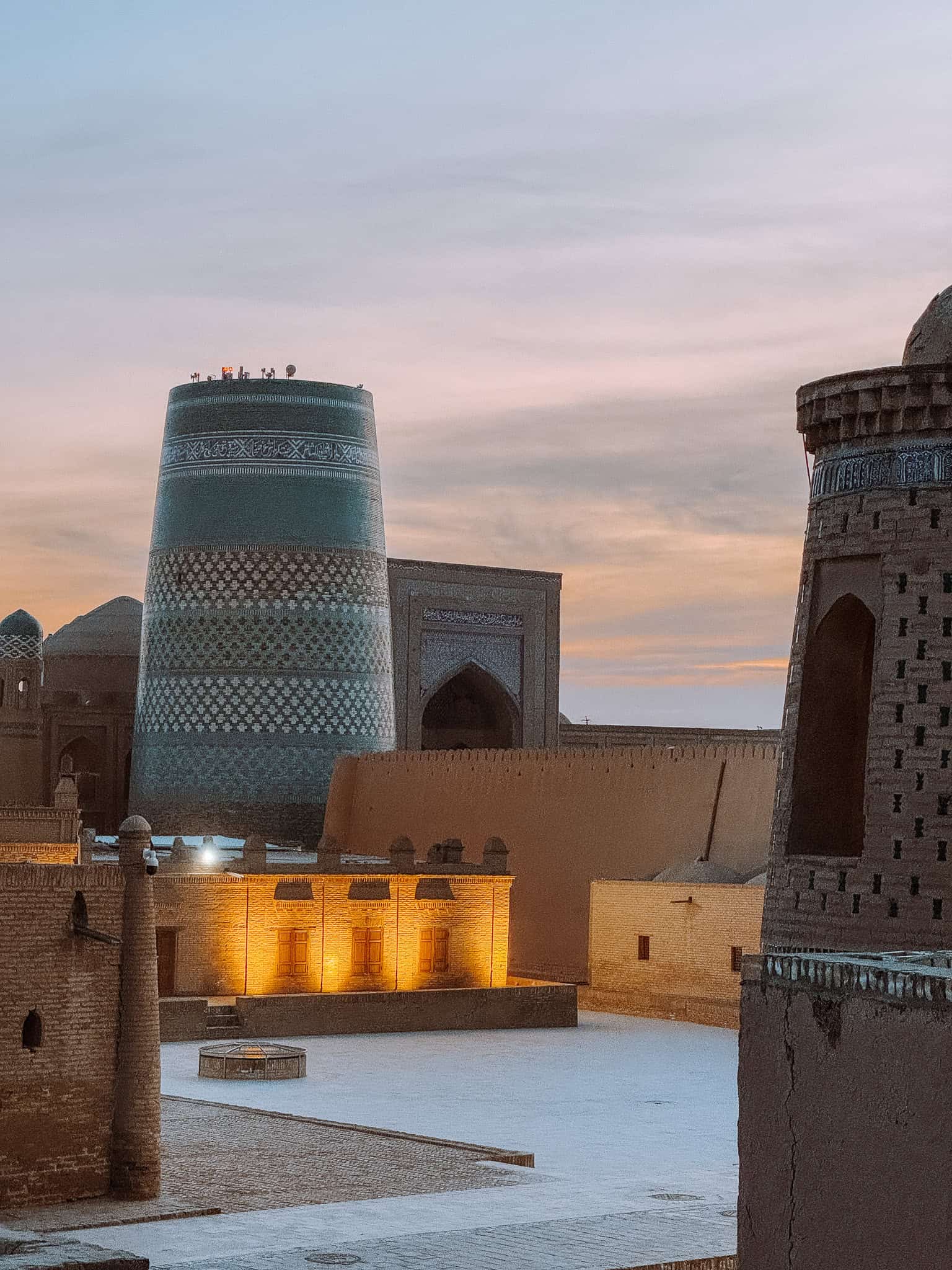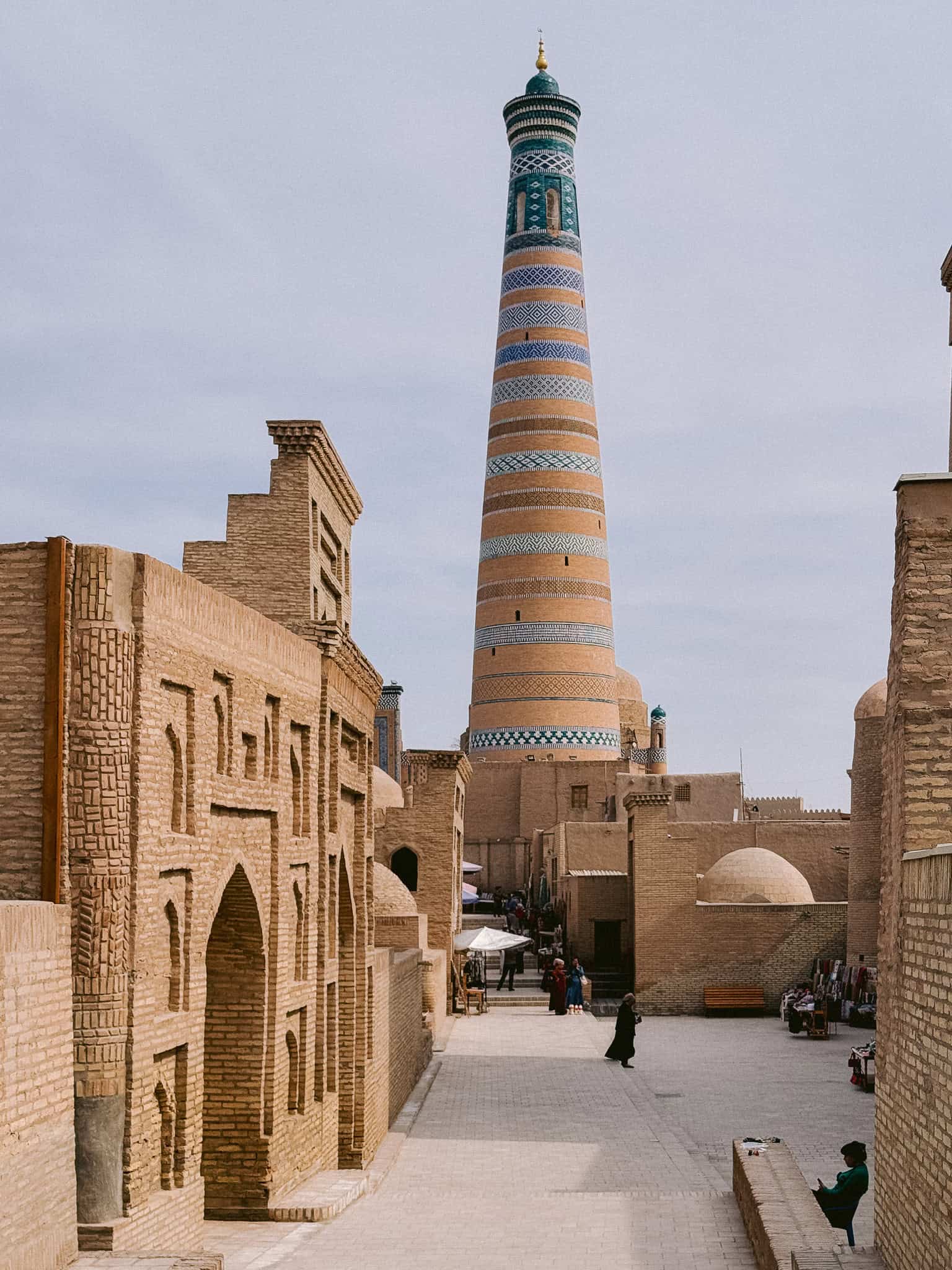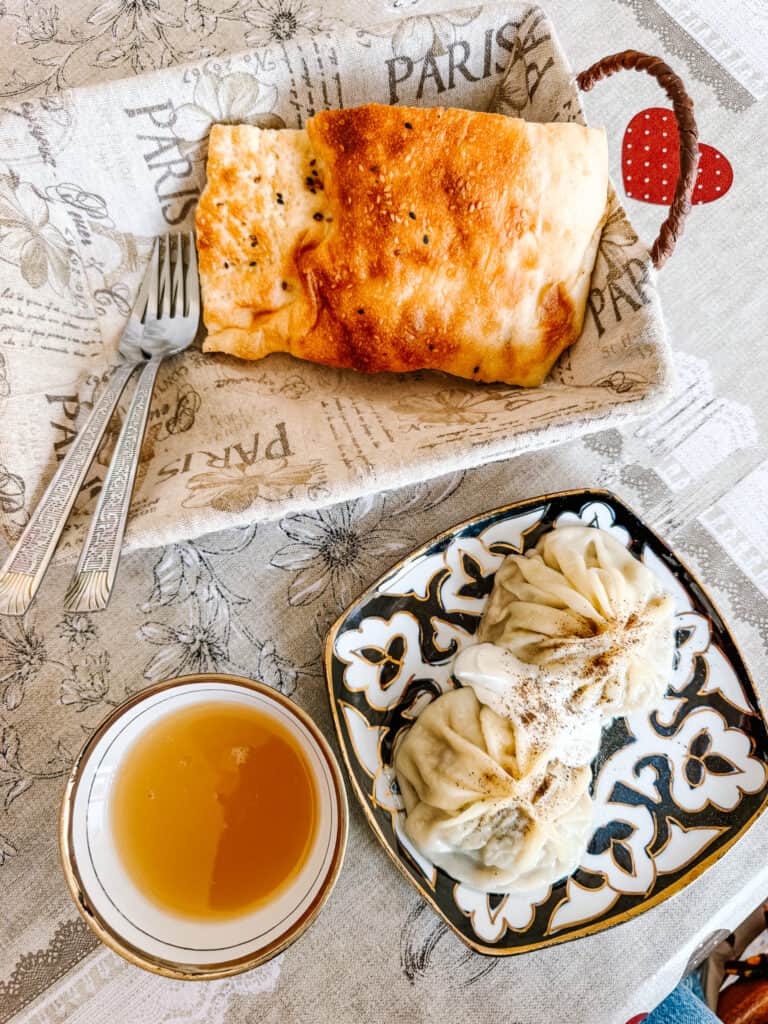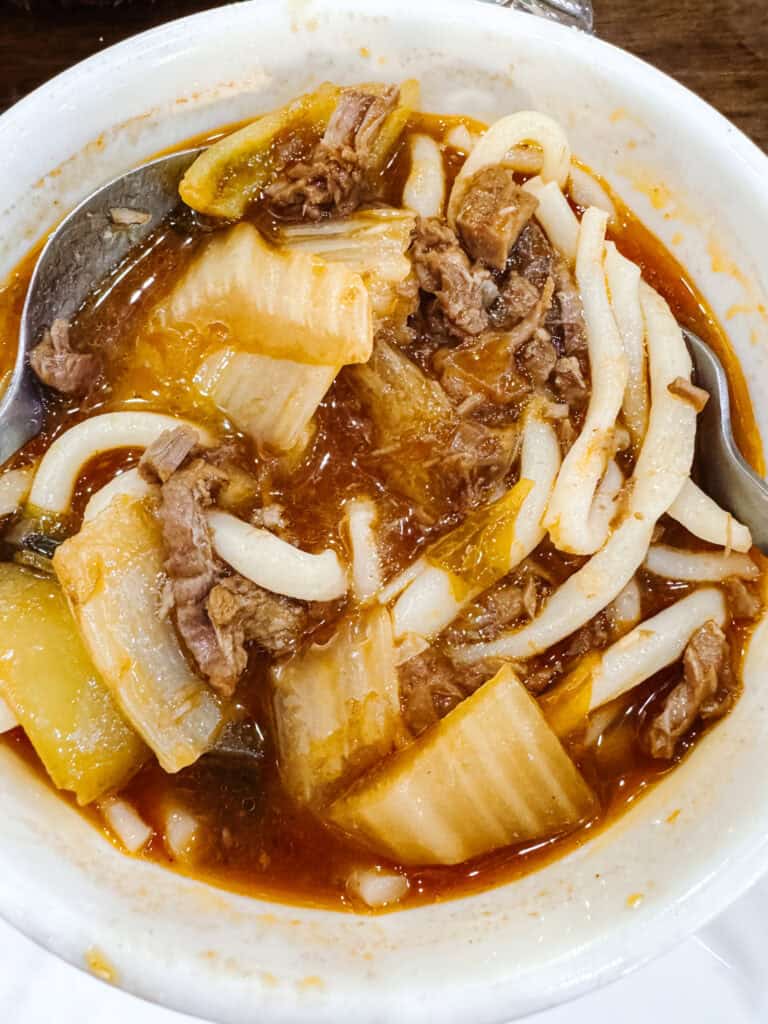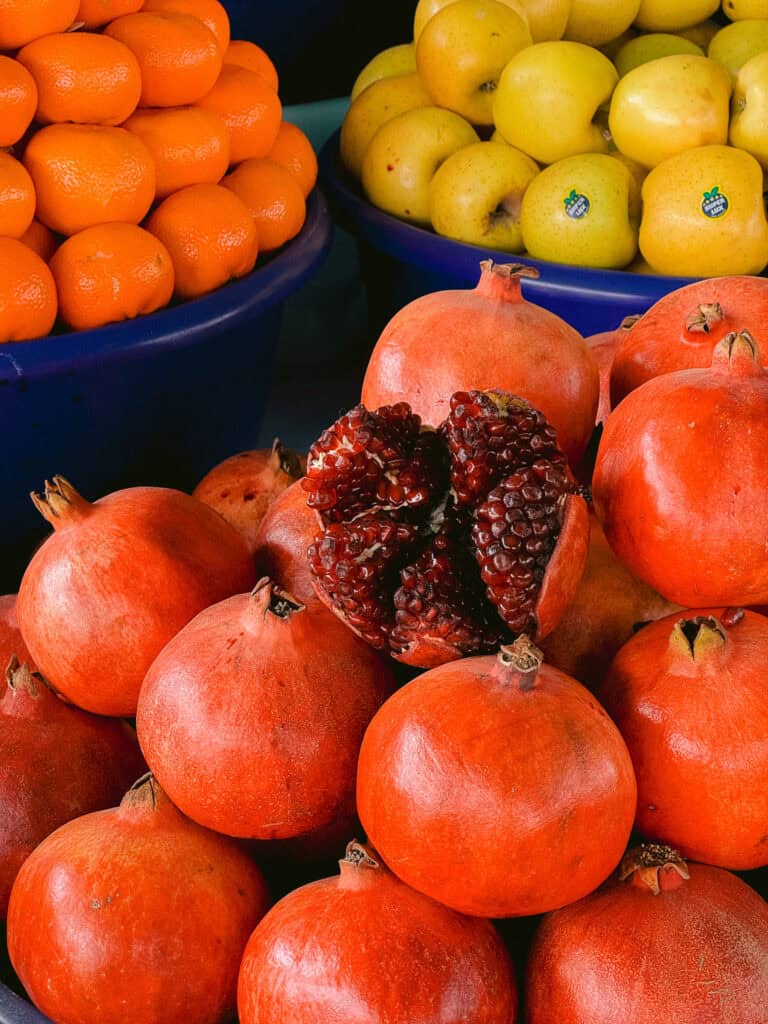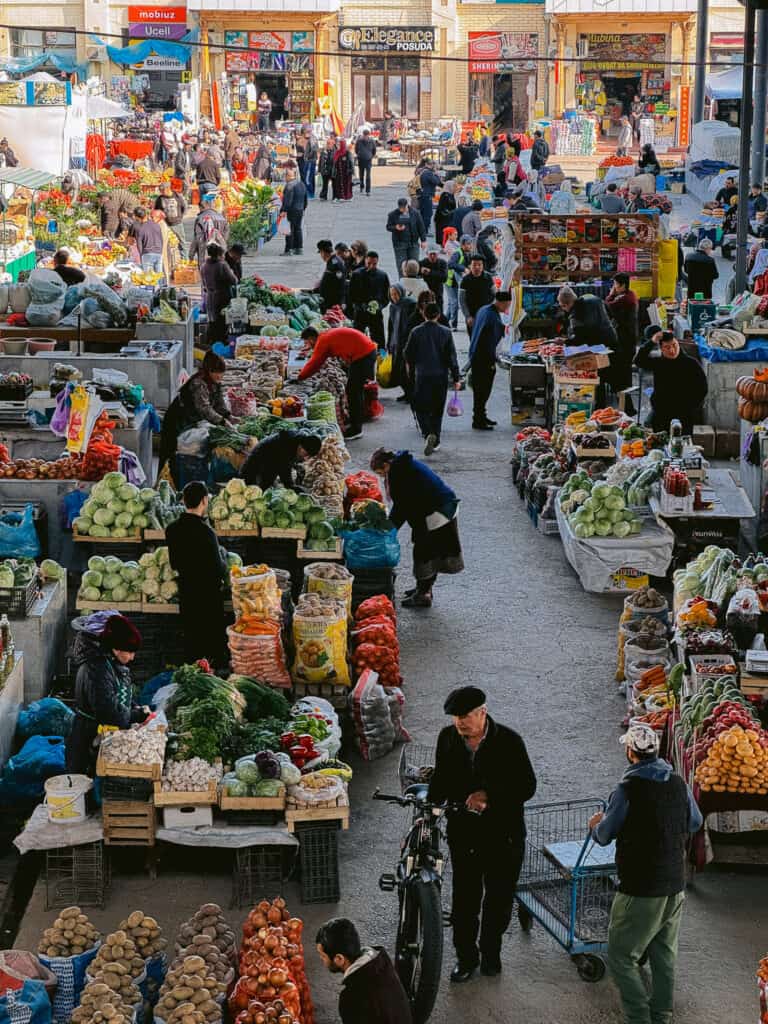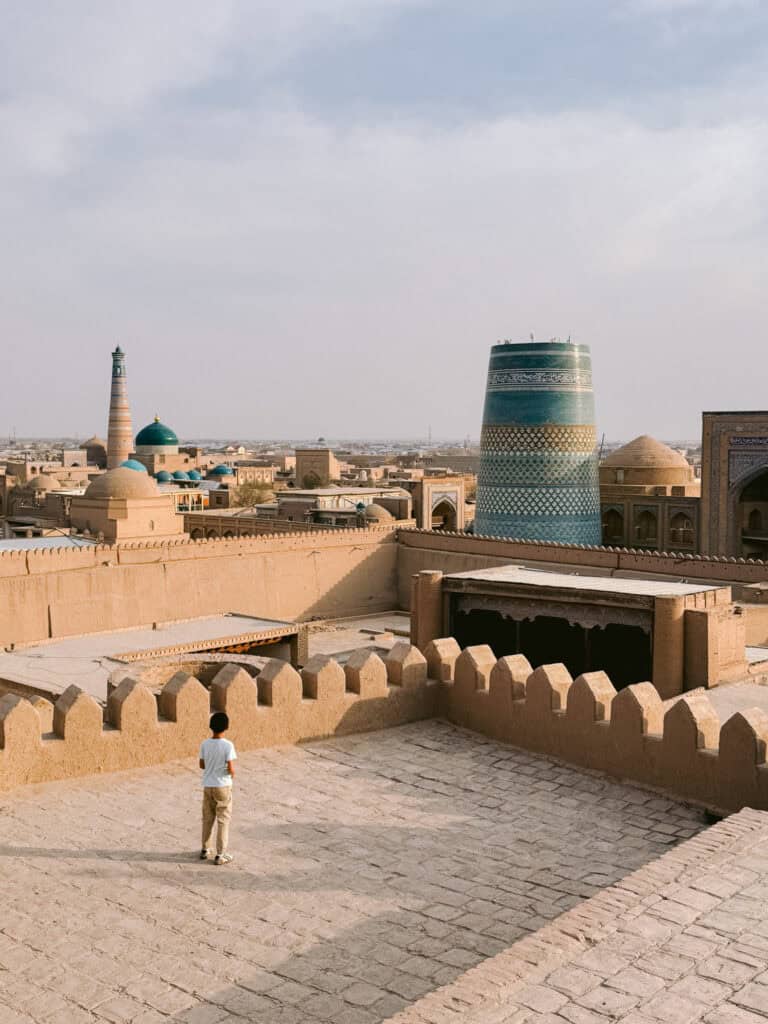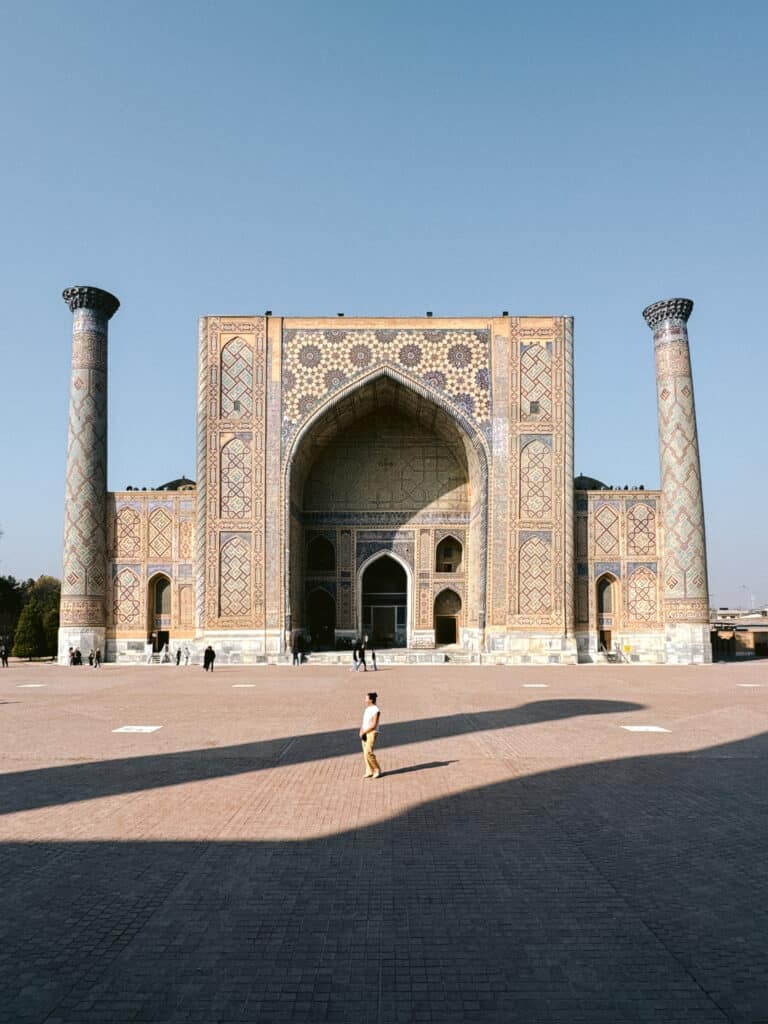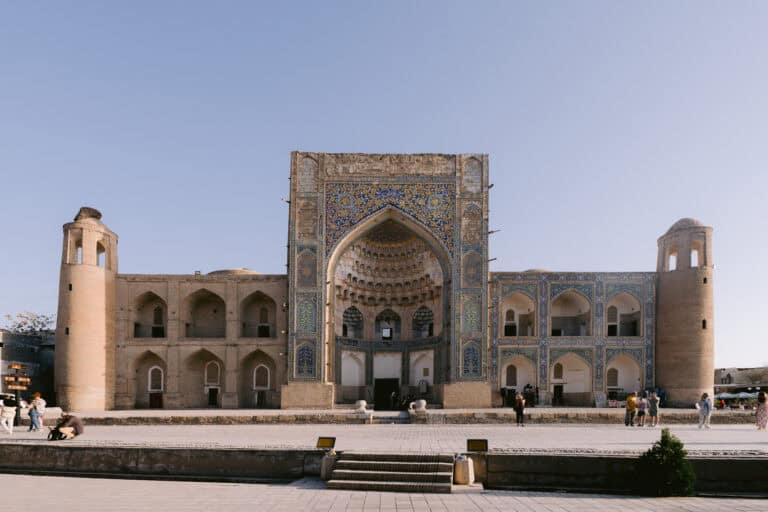22 Things to Do in Uzbekistan for a Truly Immersive Trip
Of all the Central Asian countries, Uzbekistan is the best set up for tourism, and there’s no shortage of things to do in Uzbekistan.
I traveled here independently in 2025 after doing a ton of research. My goal was simple: hit up the best places to visit in Uzbekistan while also digging into the attractions and experiences that don’t always top the must see list. In short, I wanted a little bit of everythinnnnnnng (who doesn’t, right?).
If you’re looking for a shortcut to the ultimate list of things to do in Uzbekistan that’s NOT just another recycled roundup, you’ve come to the right place. Of course, I’ll cover the classics (because no Silk Road itinerary is complete without them), but I also want to share the sensory experiences — the tastes, sights, and moments — that made the trip unforgettable.
🏜️ Want to skip the planning?
Here are the top-rated tours for the experiences mentioned in this list:
🕌 Silk Road City Tours:
🏛️ Explore Shahrisabz’s ruins + local bazaar (guided day trip)
🚗 Scenic private drive to Shahrisabz via mountain pass
🏜️ Nature & Adventure:
🚙 Day trip from Khiva to the desert fortresses with a driver and guide
📸 A photographer led day trip from Khiva to ancient Khorezm
🚘 Day trip from Khiva to the Aral Sea
🌄 Two Day trip to the Aral Sea from Nukus with overnight in yurt
⭐ Two Day trip to the Aral Sea from Khiva
🌄 Cross-Border Day Trips:
🏛️ Explore Panjakent on a private day trip from Samarkand
🏔️ 7 Lakes Tour with Lunch — Scenic mountain escape from Samarkand
🧭 Full 7 Lakes Journey — including a stop at the Sarazm ruins
🧳 Want Everything Pre-Planned Instead?
If scrolling through tours feels overwhelming, grab my Easy Guide to Uzbekistan — it includes:
✅ A starting itinerary with all the tips to help you customize your trip from there
✅ All transfer information within the country and guide information
✅ Costs, contacts & booking links in one place
🎁 Bonus Insider Perk: The Uzbekistan tour guide I used will give you 20% off your booking if you mention Diana sent you. He not only does day trips but provides tours around the whole country!
👉 Download it here and start packing instead of planning.
The Silk Road Classics You Can’t Miss
1. Stand in Awe at Registan Square (Samarkand)
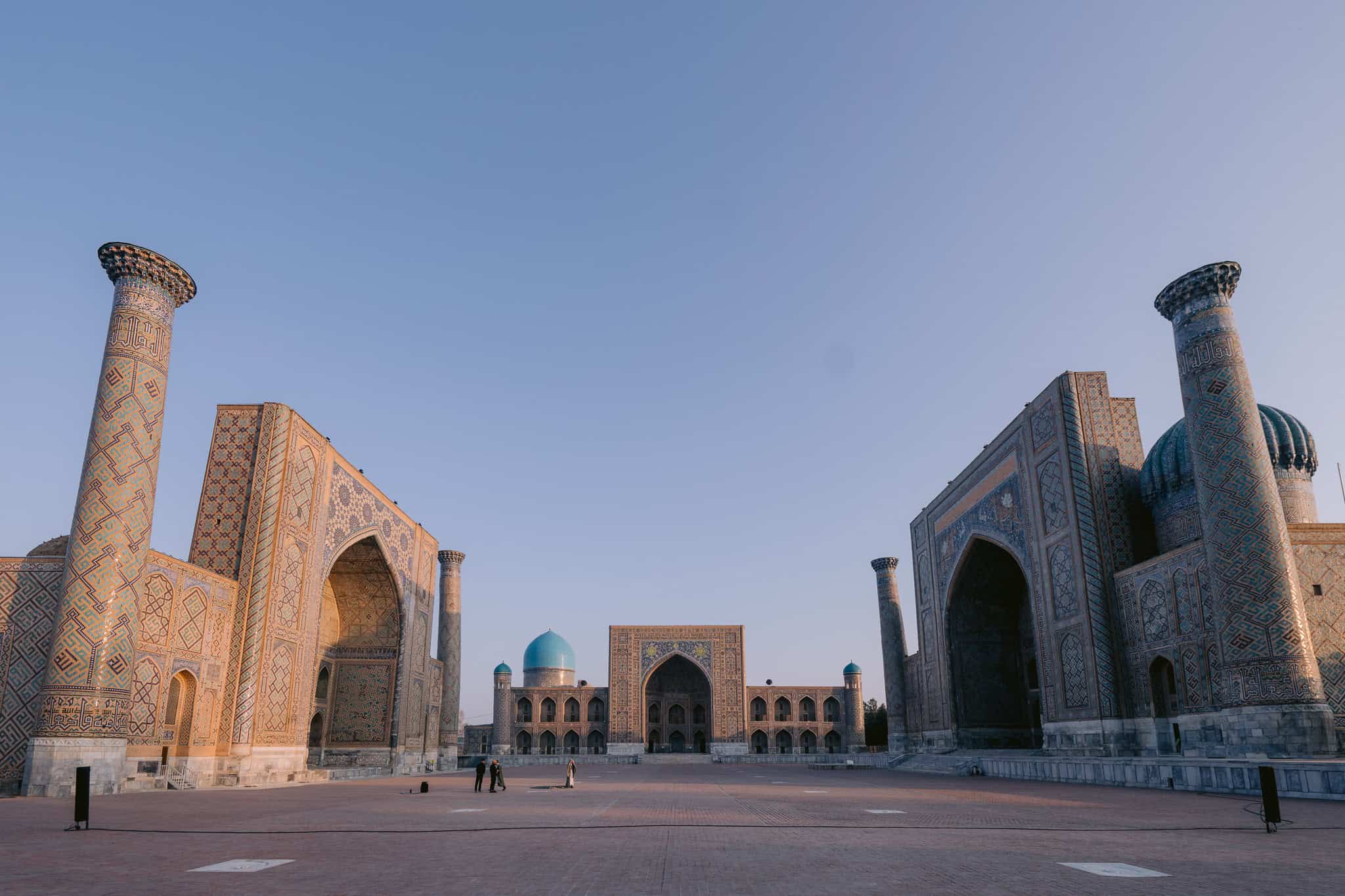
If there’s one icon of Uzbekistan, it’s Registan Square in Samarkand. This is the city’s centerpiece—three ornate, giant madrasas flanking the square on three sides. Stand in the middle and you’re reminded how friggin’ TINY you are.
Up close, the details are mesmerizing: painstaking mosaic tilework, geometric patterns, and a gleaming cobalt facade. I’ve never seen anything like it. After walking all over Samarkand and learning more about Timur’s rule here, the Registan felt like the perfect introduction to Timurid architecture and a gateway to the Silk Road story with its ridiculous beauty and scale.
As a visitor, you can enter the madrasas, wander the inner courtyards, peek at the small souvenir stalls, and step into little museums to learn about the madrasas. You can even climb one of the minarets for a bird’s eye view of the square.
💡 Tip: Best Times to Visit the Registan
- Opening: 8:00 a.m. (ticket required). Go right at opening for the fewest crowds. By 10 a.m. it’s buzzing!
- Golden hour: Come back at sunset for soft light and photos that pop.
- Evening show: There’s often a night sound-and-light show that illuminates the madrasas and tells the region’s story. Times can vary by season (commonly around 8–9 p.m.), so check locally the day you arrive.
2. Walk Through the Shah-i-Zinda Necropolis (Samarkand)
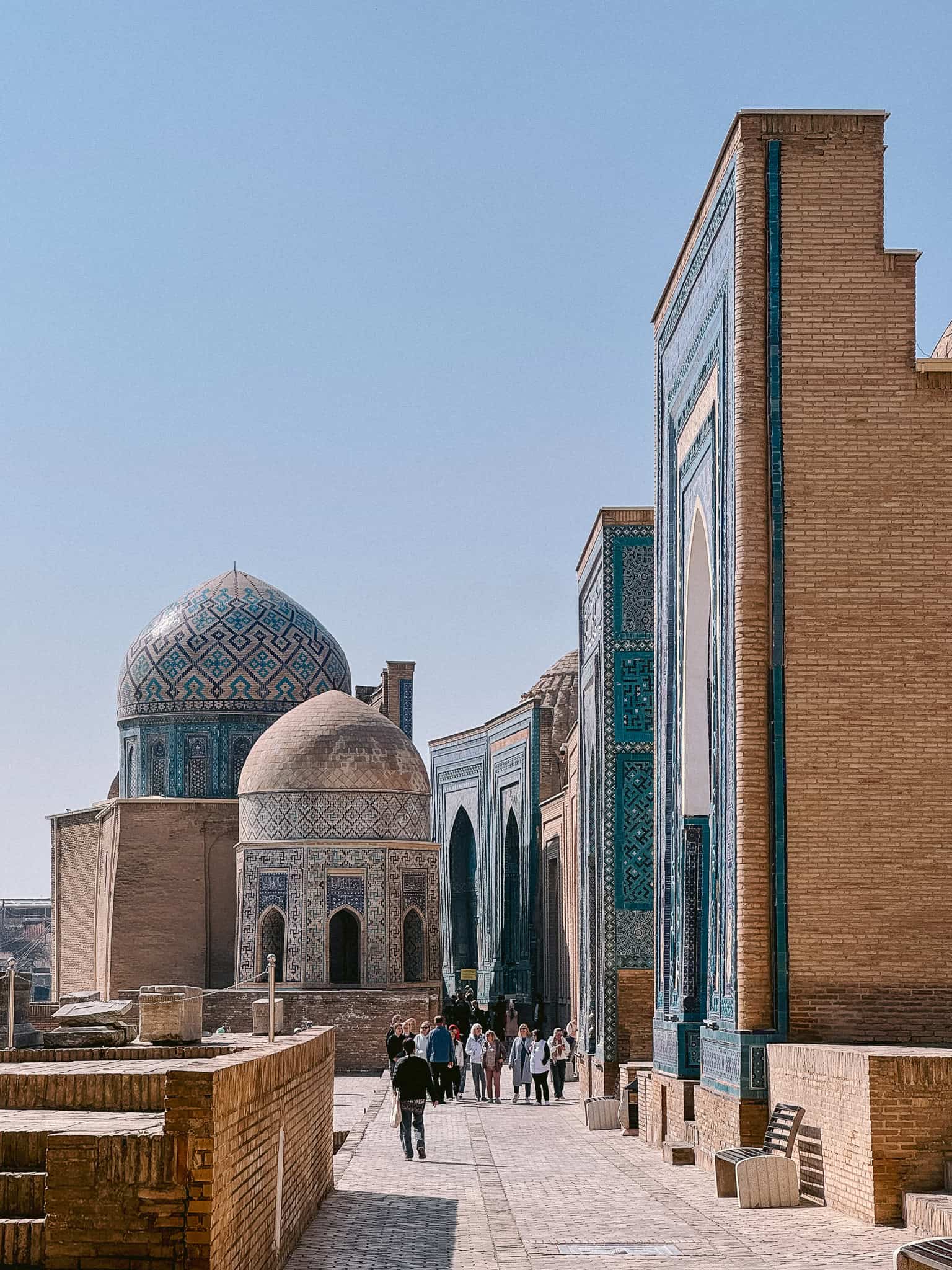
While standing in Registan Square makes you feel small, a stroll through Shah-i-Zinda feels like the opportunity to get personal. Shah-i-Zinda is a necropolis but don’t be scared! It’s probably the prettiest, most jaw-dropping necropolises you’ll ever see and you won’t regret going there (I didn’t!).
Shah-i-Zinda offers visitors one short main path to walk on to explore the tombs and mausoleums on either side. And true to the rest of the architecture in Samarkand, you’ll find the classic blue tiles, intricately placed in stunning patterns.
Walking through, you’ll know why it’s a tourist attraction, but it’s also a site of pilgrimage and reverence. Prophet Mohamed’s cousin is believed to have a tomb here.
I enjoyed the peacefulness of a stroll here compared to the hustle and bustle at the Registan. Even when there were many people at Shah-i-Zinda, it still felt quiet.
💡 Tip: Visit Shah-i-Zinda towards sunset to avoid crowds. It’s also a prime time for golden-hour photos.
3. Visit the Gur-e-Amir Mausoleum (Samarkand)
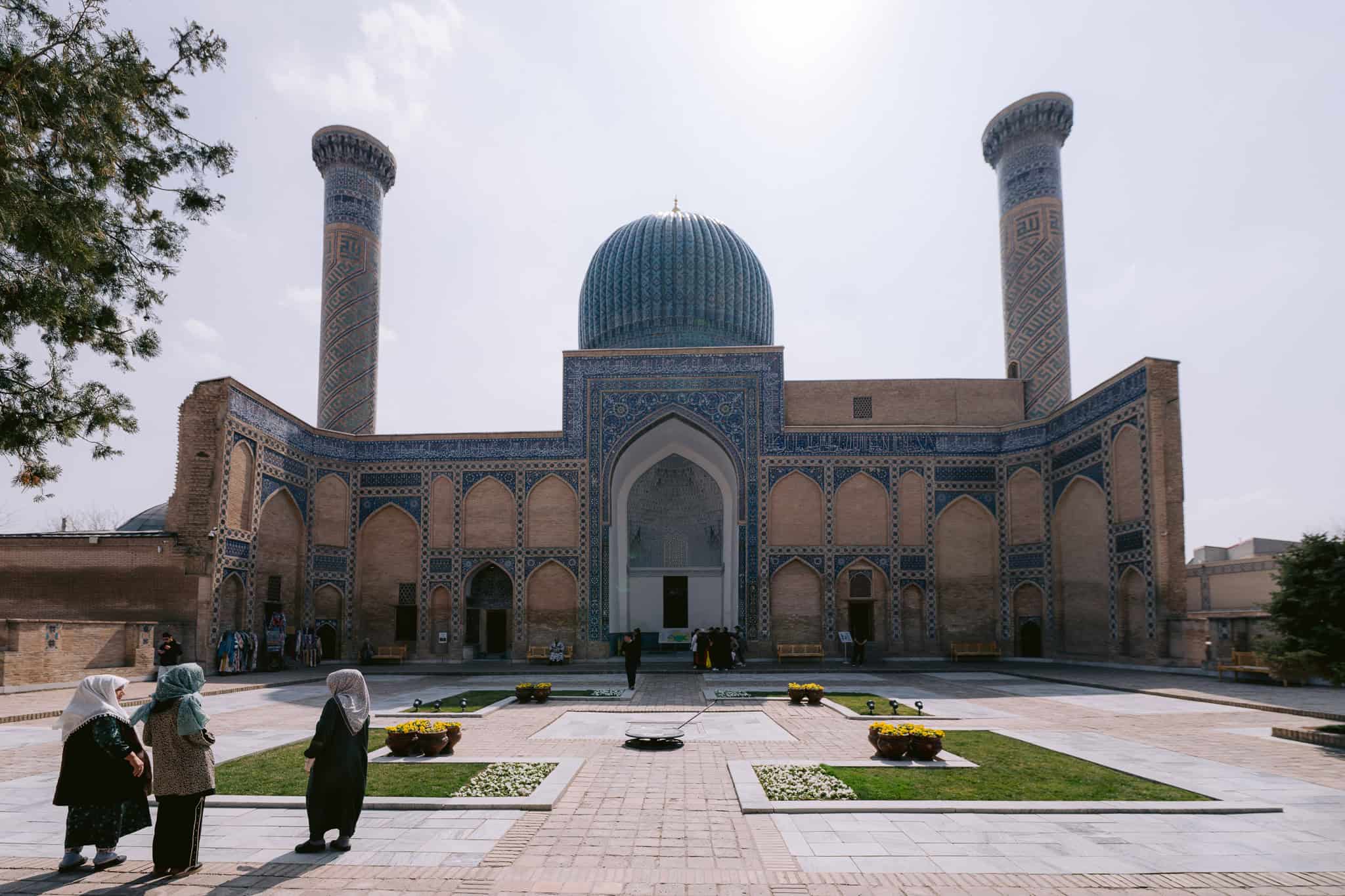
If I’m being completely honest, I hadn’t even heard of Amir Timur before traveling to Uzbekistan. But this 14th-century ruler is everywhere here — especially in Samarkand, where he’s revered as the city’s greatest hero. Timur built an empire that stretched across much of Central Asia, and the larger-than-life architecture you see all over Samarkand is a direct result of his vision.
That’s why no trip to the city is complete without stopping by the Gur-e-Amir Mausoleum, Timur’s tomb. It’s about a 20-minute walk from Registan Square and smaller in scale, but it makes up for it with that classic blue mosaic tilework and its striking turquoise dome. Step inside and you’ll find not just Timur’s tomb but also the tombs of others in his family.
💡 Tip: Later in your trip, connect this visit with a day trip to Shahrisabz, Timur’s birthplace. Together, they tell the full story of his life, legacy, and influence on Uzbekistan.
4. Step Inside the Bibi-Khanym Mosque (Samarkand)
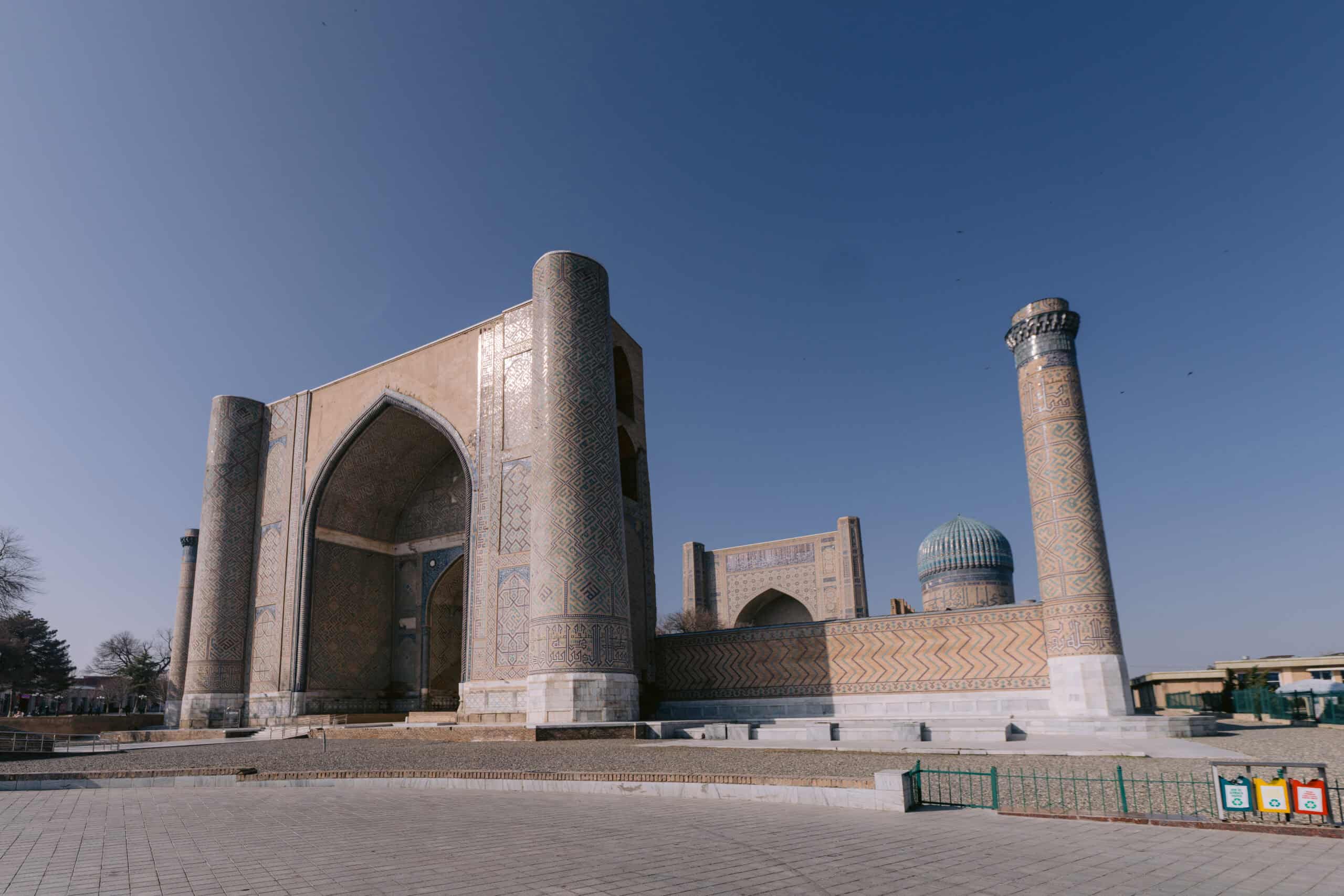
Bibi-Khanym Mosque is on every must-see list for Samarkand for good reason. Once one of the largest mosques in the Islamic world, it is impressive as hell (which is what Amir Timur wanted visitors to experience when they saw it – mission accomplished).
Aside from how huge it is to see in real life, it’s also worth checking out because of the story behind its construction. Bibi-Khanym was Amir Timur’s favorite wife. The architect building the mosque fell in love with her and refused to finish its construction until she kissed him. Apparently, she obliged but when Timur found out, he was rightfully pissed so he did what conquerors did best in those days: he executed the architect (or maybe he banished him… who really knows, but the story of execution sounds much more dramatic so let’s go with that 😉).
💡 Tip: You can combine a visit to the Bibi-Khanym Mosque with the Siab Bazaar nearby. Then continue to Shah-i-Zinda!
5. Explore the Ark Fortress & Kalan Minaret (Bukhara)
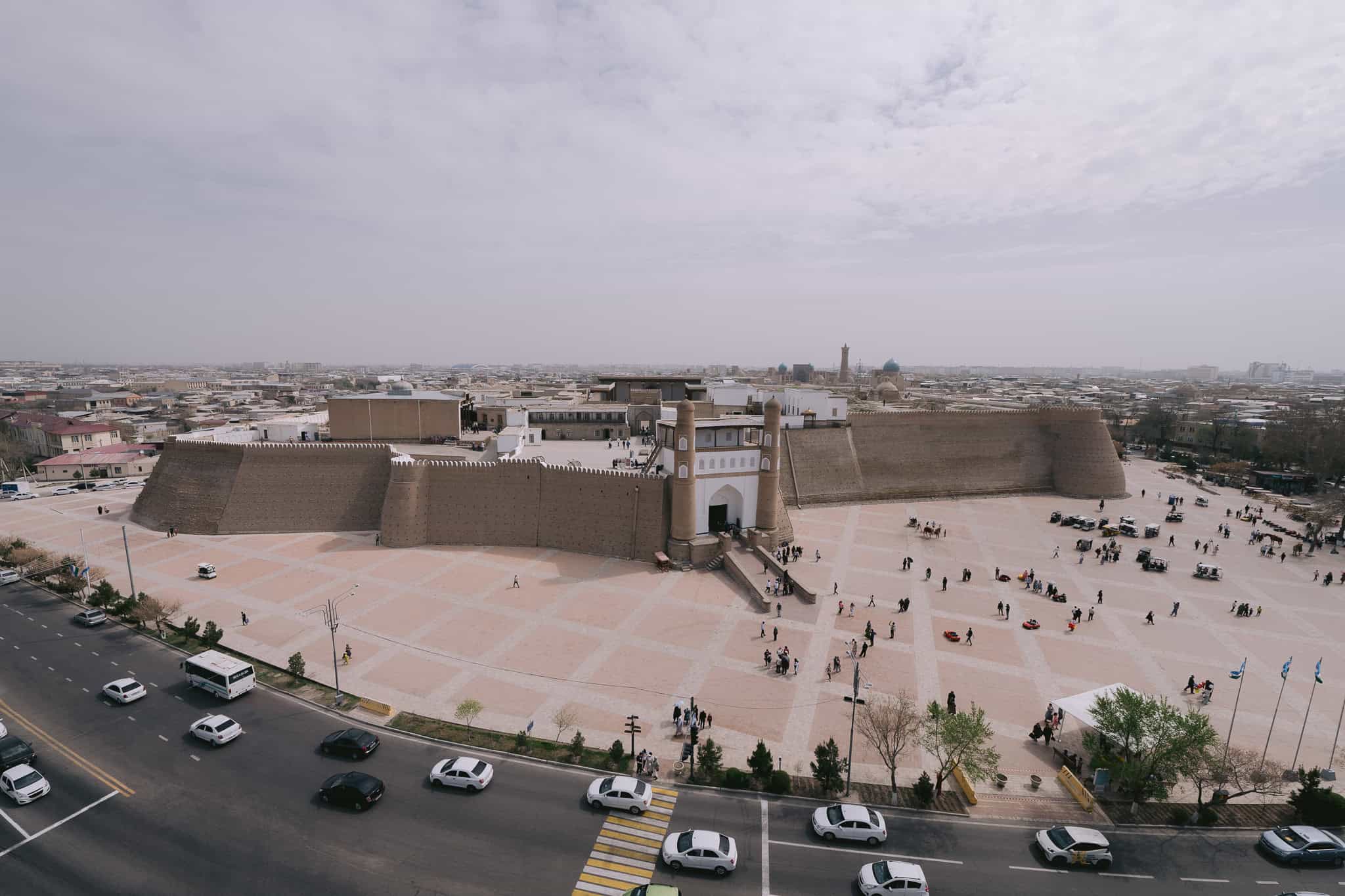
Bukhara is another must-see Silk Road city, with a vibe distinctly different from other Silk Road cities. While Bukhara is worth its own post, there are two highlights in the city that stand out: the Ark Fortress and the Kalyan Minaret.
The Ark Fortress rises dramatically from the middle of the city, its steep mudbrick walls hiding the old royal courts and what was once a whole town inside. Wandering through the fortress, you get a sense of how Bukhara operated as a walled city. From the high vantage point of the fortress, you’ll find sprawling views over Bukhara. Below the fortress is a mix of modern-day fun — bike rentals, camel rides, and even kiddie attractions.
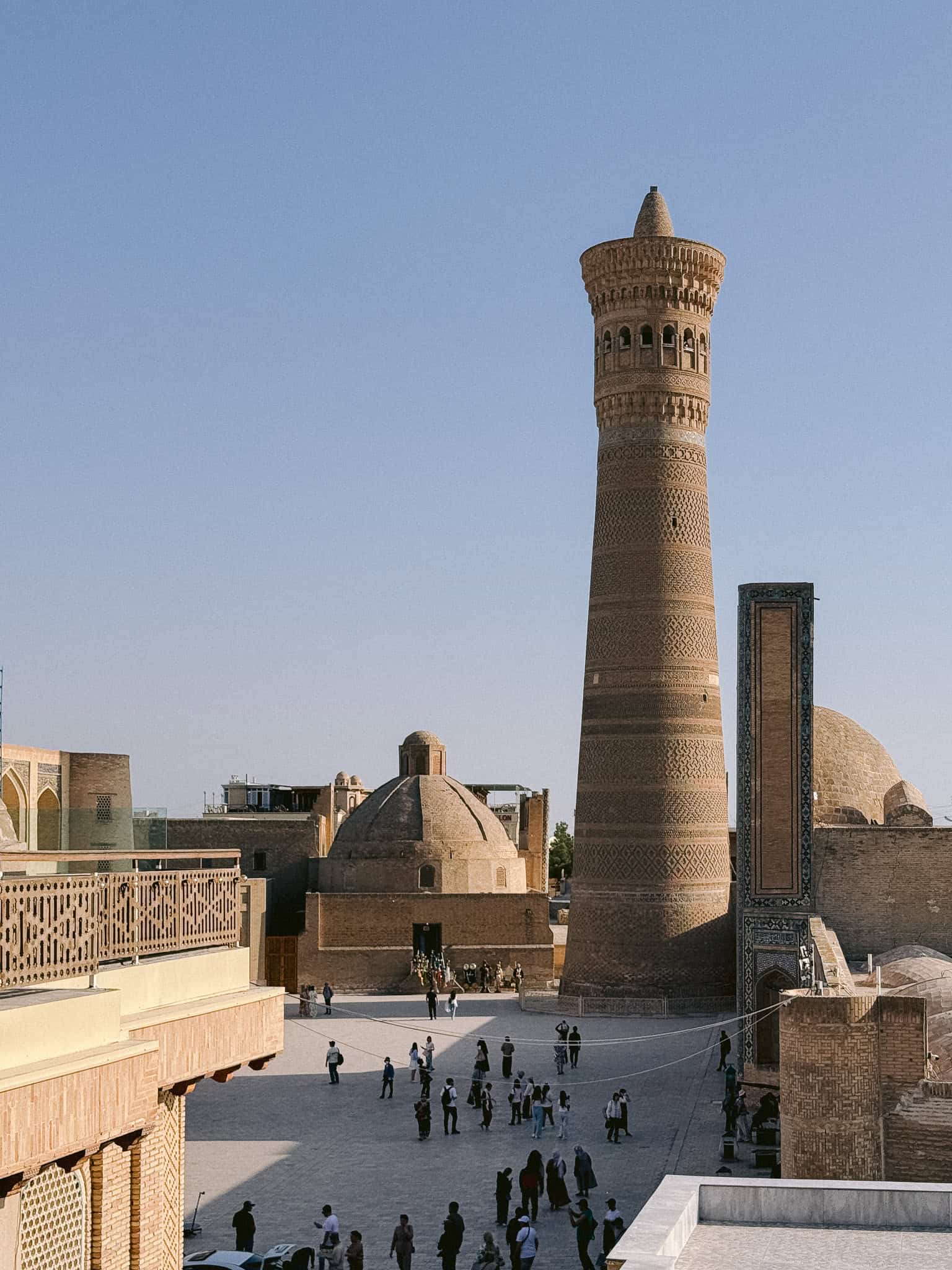
About a 15-minute walk away is Bukhara’s other landmark: the Kalan Minaret. At nearly 50 meters high, it’s a stunning piece of Islamic architecture and the centerpiece of the Pol-i-Kalyan complex. Today it’s iconic but back in the 16th to 19th centuries, it had a much darker role. Criminals were executed by being thrown from the top, earning it the nickname “The Tower of Death.”
💡 Tip: Head to one of the terrace restaurants across from the Po-i-Kalyan complex for golden hour views. I stopped at Chasmai-Mirob for drinks and photos and it was the perfect rest stop after a day of walking.
6. Get Lost in Khiva’s Walled City, Itchan Kala (Khiva)
It’s a shame Khiva is the most “out of the way” Silk Road city in Uzbekistan — but oh my goodness, it was my clear FAVORITE. You’d be remiss to skip it on your Uzbekistan itinerary. This UNESCO-listed walled old town feels like walking through a fairytale. If Aladdin were real, he probably lived in Khiva. It’s that cute.
Not only is it a visual treat to stroll through, it’s also a living museum — people actually still live and work inside Itchan Kala. Somehow, it’s stayed perfectly preserved, too.
Yes, there are madrasas, palaces, mosques, and museums to check off, but the best part of Khiva is just wandering inside the walls: getting lost, stopping for tea, browsing bazaars, and catching the photo ops that pop up at every corner. It really is THAT picturesque.
💡 Tip: Khiva gets crowded midday with tour buses shuttling in day-trippers, and vendors spill into the streets — some tourists even say it feels a bit like “Disneyland” (I would agree if I only saw it in midday). To avoid this, stay overnight. In the mornings, Itchan Kala is peaceful and quaint; at night, it transforms into a lively town with locals gathering, music, and food vendors.
7. Glimpse Soviet Uzbekistan in Tashkent
If you’ve never visited a former USSR city and have always been curious what they are like, add Tashkent to the list to sample Soviet Uzbekistan. A lot of travelers visit it in a day since it’s a popular entry point into Uzbekistan.
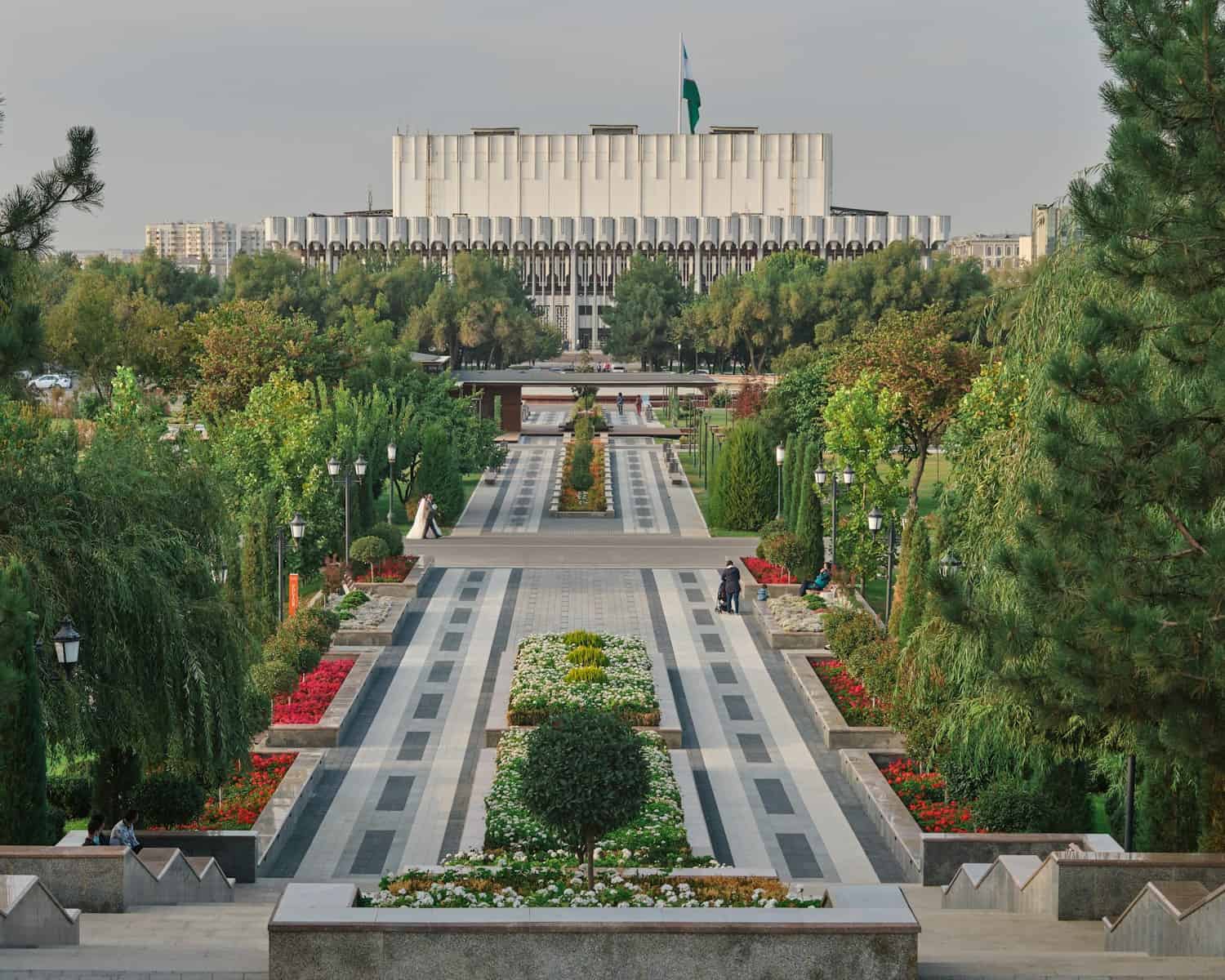
I hemmed and hawed over whether to visit, but I’ve been to plenty of Soviet cities in the past so I deprioritized it. That said, if you’re going to fly into Tashkent anyway, you should carve out a day to see its major sites: the Tashkent Metro, Chorsu Bazaar, museums, madrasas, and admire all the blocky (and sometimes funky) Soviet architecture. It’s the one place in Uzbekistan where you really feel the USSR influence.
I’m including it in this list of “classic” things to do in Uzbekistan because it feels criminal to leave off the capital of Uzbekistan and many travelers do opt to visit!
💡 Tip: If you base yourself in Tashkent, you can do a day trip to Samarkand using the high speed rail. It’s roughly a two hour ride. There are also tours that offer day trips from Tashkent to Samarkand. Just note that the schedules work only one way — day trips from Tashkent to Samarkand are possible, but not the other way around.
Food and Flavor Across Uzbekistan
8. Try Plov in Every City
You can’t leave Uzbekistan without trying its national dish, plov. Plov is like a rice pilaf, oily, hearty, and mixed with meat and vegetables. It’s time intensive to prepare and often enjoyed at special occasions. That said, it’s not hard to find plov in Uzbekistan as it’s a menu staple at traditional restaurants.
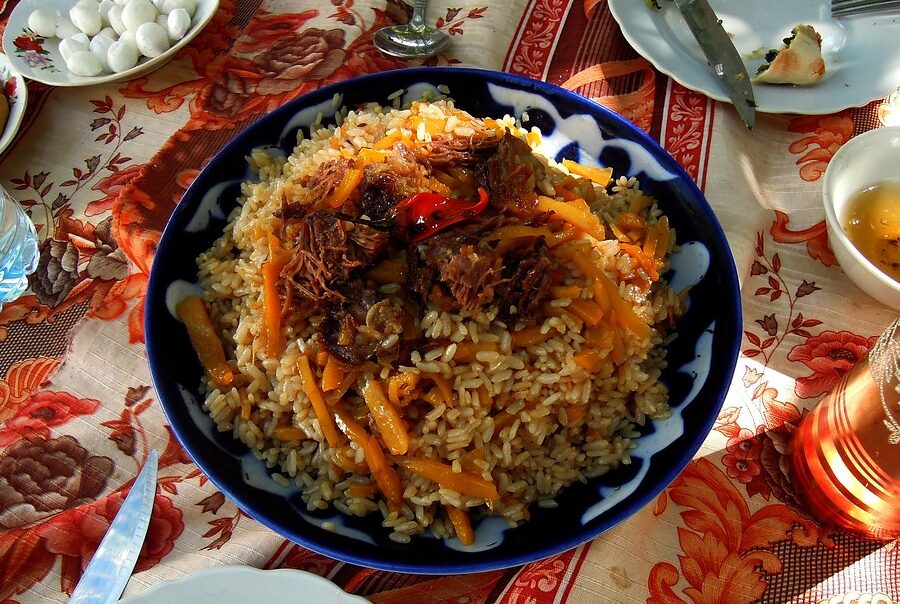
What’s fun about plov is there’s actually not just one version of it. Each city has its own take on plov and locals swear theirs is the best. I tried Samarkand plov and Bukhara plov. Samarkand’s is known for being lighter than Bukhara’s.
Did I like it? Well, both were a bit too oily for my taste, but I am glad I tried them. You can’t get a culturally immersive experience in Uzbekistan without trying this cornerstone of Uzbek cuisine!
💡 Tip: Ask locals where the best plov can be found in their city. They all have their faves!
9. Taste More Uzbek Dishes Beyond Plov
Plov might not have been my favorite Uzbek dish, but luckily there are plenty of others that hit the spot. I definitely recommend sampling as many traditional Uzbek dishes and local cuisine as you can — you might be surprised which ones become your favorites.
Some of the ones I enjoyed were:
- Manti – Think giant Uzbek dumplings also popular as Central Asian dumplings (two to three times the size of Chinese xiao long bao), stuffed with vegetables, beef, or lamb. At about $0.50 each, they’re cheap and filling.
- Laghman – Hand-pulled Uzbek noodles in a flavorful broth with vegetables. The taste reminded me of hot-and-sour soup. My son (who is super picky about what he eats) wants to return to Uzbekistan because “I miss laghman”. So, if it has the approval from a kid, that’s saying a lot!
- Samsa – This classic Uzbek street food is a baked triangular shaped pastry that is stuffed with meat inside. After sampling samsa in multiple cities, my recommendation is to eat it while it’s hot and fresh. After it’s cooled down, it’s not as good.
- Shivit oshi – This is a green noodle dish that is a Khiva specialty dish. The noodles are dyed green with dill, served with meat, and a side of yogurt. I was surprised how good it tasted!
The best part of incorporating traditional Uzbek food into your meals? They are among the most affordable menu items in Uzbekistan — a great example of what to eat in Uzbekistan if you’re traveling on a budget and looking for affordable Uzbek food. Wallet-friendly and delicious sounds like a winning combo to me. 🙌🏼
10. Dine with a Rooftop View in Khiva
One of my favorite things to do whenever I travel is hunt down a restaurant with a view. I’m a sucker for dining with a view, and in Khiva I was lucky to find two restaurants with not just photo-worthy rooftops but delicious food, too.
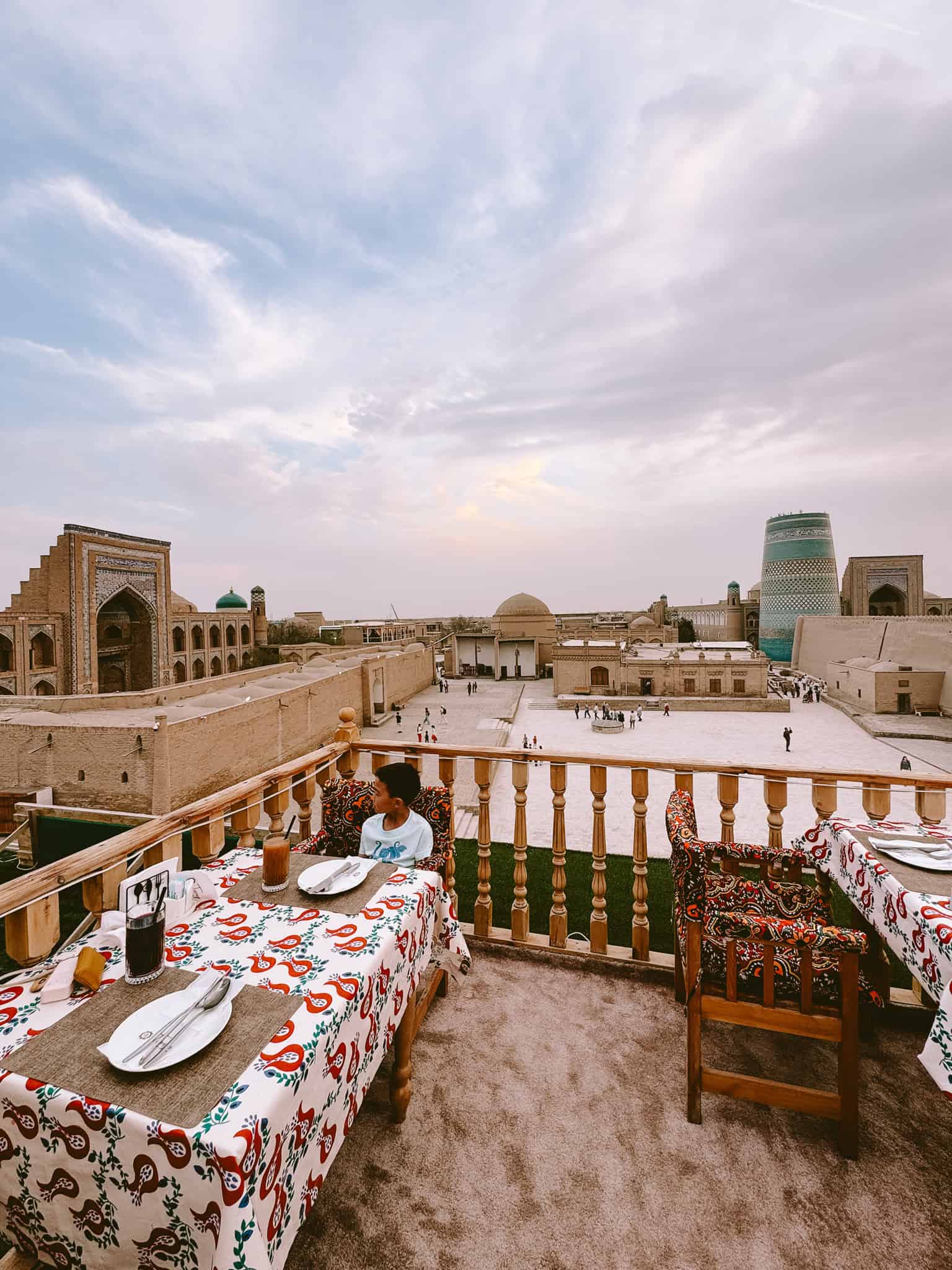
The first is Terrassa Cafe & Restaurant, which is located in a square with perfect views of Kunha Ark, a fortified citadel, on one side and Mohammed Rakhim Khan Madrassah on the other. At sunset, both landmarks light up and the tourists milling around Khiva’s old town are replaced with local families going for a stroll below. I often caught kids playing soccer in the open square. Terrassa serves international cuisine as well as traditional Uzbek cuisine. This is a great place to try shivit oshi, too.
💡 Tip: If you want to dine on the terrace at Terrassa, you need a reservation. Make the reservation at least a day in advance since this place is popular!
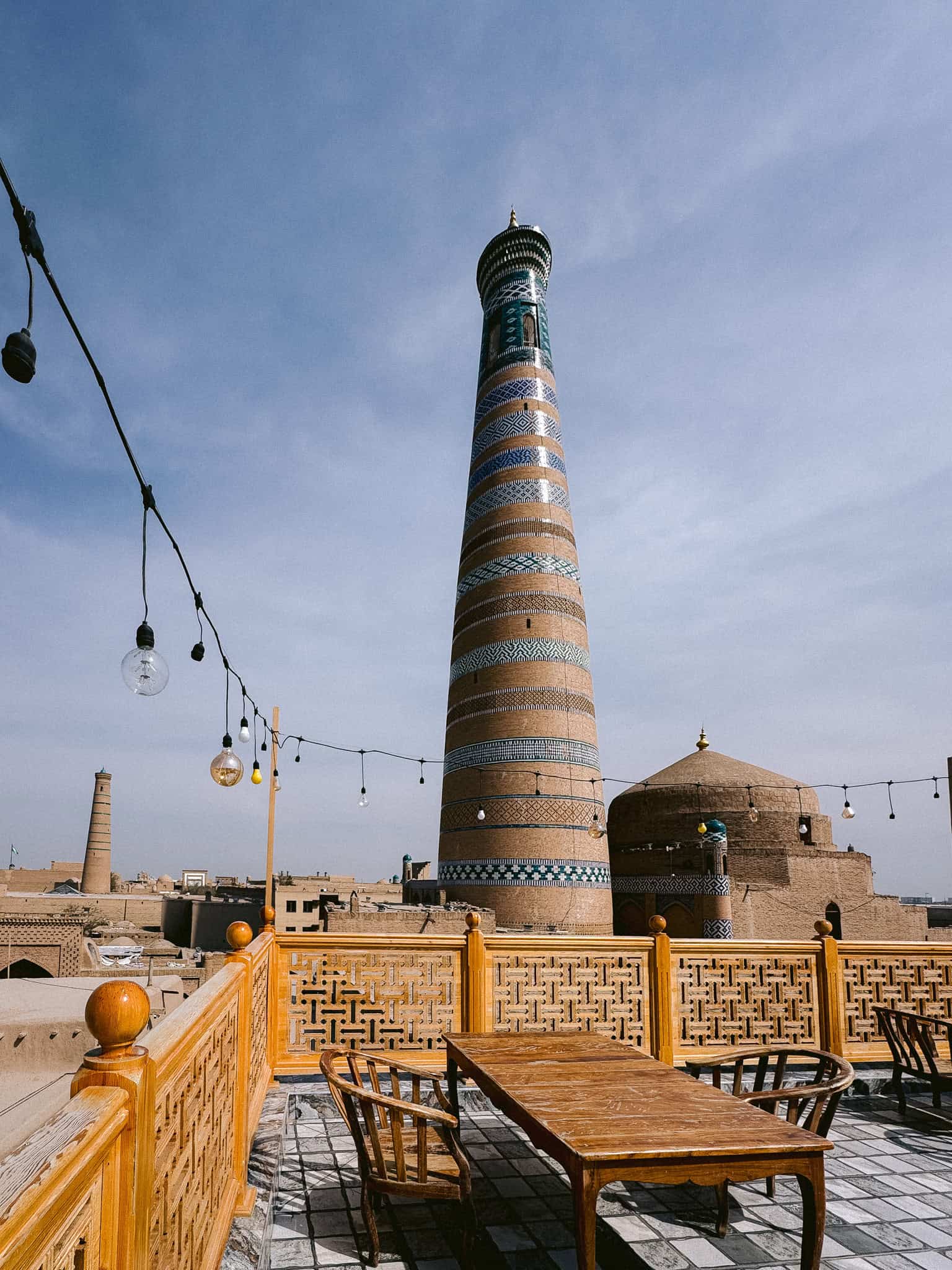
The second restaurant with stunning views is Sultan. It’s right next to the Islam Khoja Minaret so its rooftop has an amazing view of the the tallest minaret in town, plus the madrasas and mausoleums around it. While the rooftop has the best view from the restaurant, Sultan has multiple floors. So, if you’re sitting by a window, you’ll still catch the incredible skyline outside. Sultan serves traditional Uzbek food.
💡 Tip: In the day time, it may be too hot to dine on Sultan’s rooftop so plan to come here for dinner if you’re looking for al fresco dining with views!
11. Browse Silk Workshops and Shops
If there’s one thing you’ll notice as you wander the streets of Uzbekistan’s Silk Road cities, it’s the abundance of stalls selling silk garments, often inspired by the Margilan silk weaving tradition. While the most popular and distinctive Uzbek pattern is ikat, there are plenty of designs to choose from.
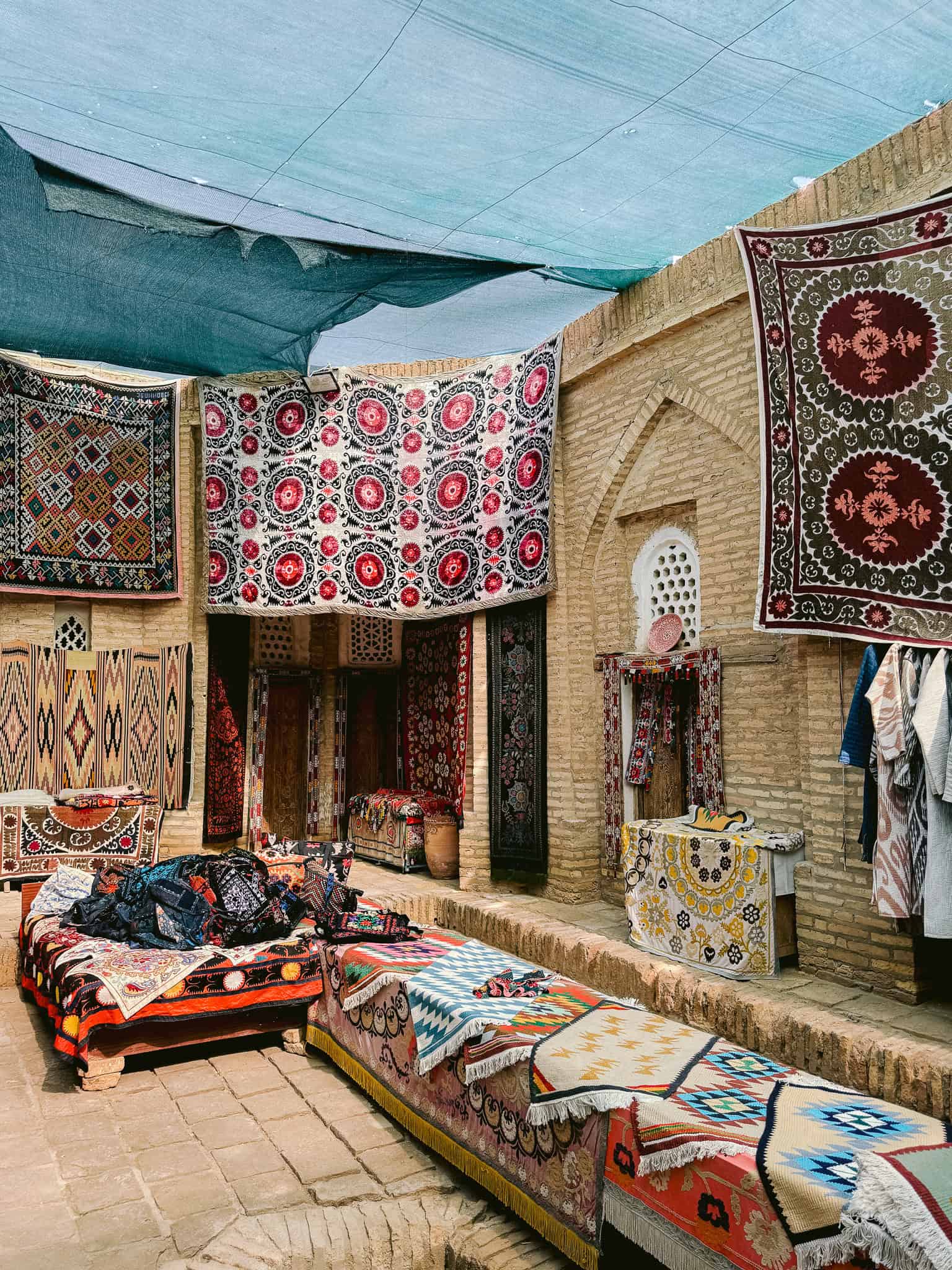
Make sure to spend some time browsing the shops, regardless of whether you plan to buy anything. It’s a dazzling feast for the eyes as you’ll find everything from flowy silk pants to glamorous long dresses and kaftans.
There are also silk workshops in many cities that you can pop into as well. In Khiva, I walked into a small workshop where they happily demoed how do traditional silk weaving for carpets.
💡 Tip: If you do want to buy something, don’t be shy about bargaining whether it’s a handwoven scarf or a bold silk dress. Every vendor will tell you their items are handmade (even though some are machine made) and of the highest quality (despite the occasional visible, loose thread) but are willing to negotiate if you ask for a better price. Regardless, picking up silk pieces in Uzbekistan will be a steal compared to buying it abroad.
🧵 Silk Buyer’s Checklist in Uzbekistan
Journeys, History, and Cross-Border Adventures
13. Ride the Train Between Silk Road Cities
All the major Silk Road cities are linked by Uzbekistan’s rail network. There are three types of trains: the classic Sharq, the sleek Afrosiyob high-speed train, and the sleeper trains (used for longer distances, like between Samarkand and Khiva).
At some point in your Uzbekistan itinerary, you should include a train ride. It’s far more economical than a train ride in Europe, yet just as efficient! The rides are smooth and window seats provide a way to spot the changing landscape outside. Plus, it’s mostly locals that ride the trains so it’s another good way to sample local life.
💡 Uzbekistan train travel tips I learned the hard way:
- Check schedules early. Not all routes run daily or at convenient times.
- Book in advance. Seats can and do sell out quickly, especially on the Afrosiyob. In addition, the best prices are found the earlier you book.
- Don’t trust the seat numbers too much. I booked a non-table row, only to find myself at a four-seat table. I suspect they reshuffle numbers after boarding so be flexible!
14. Step into Karakalpakstan (Uzbekistan’s Autonomous Republic)
Did you know there’s an autonomous region in Uzbekistan? Karakalpakstan operates like its own country despite being in Uzbekistan officially… and we rarely ever hear anything about it! It’s home to the Karakalpak people, a Turkish ethnic group that was historically nomadic and lived in this region. Karakalpakstan has its own culture, language, flag, parliament, and constitution so even though it’s under Teshkent’s rule, it feels very much like another country!
If you’re into visiting quirky autonomous regions around the world, you’ll want to dip into Karakalpakstan, located in the northwest of Uzbekistan, just to say you’ve stepped foot in it. Thankfully, there are no separate entry requirements. 😉
15. Explore the Ancient Desert Fortresses (Karakalpakstan)
If you’re looking for things to do in Karakalpakstan, might I suggest visiting Karakalpakstan’s Kyzylkum desert?
The desert may look harsh, but scattered across it are the Elliq Qala, or “Fifty Fortresses.” These ancient desert fortresses in Karakalpakstan will blow you away if you’re a geek about crumbling mud architecture like I am. Imagine, driving for miles and seeing nothing but flat, barren land and the odd tumble weed (ok, many tumble weeds). Then out of nowhere, you see the remnants of a castle, palace, or fortress. There are almost no other visitors and you’re free to climb it and explore yourself.
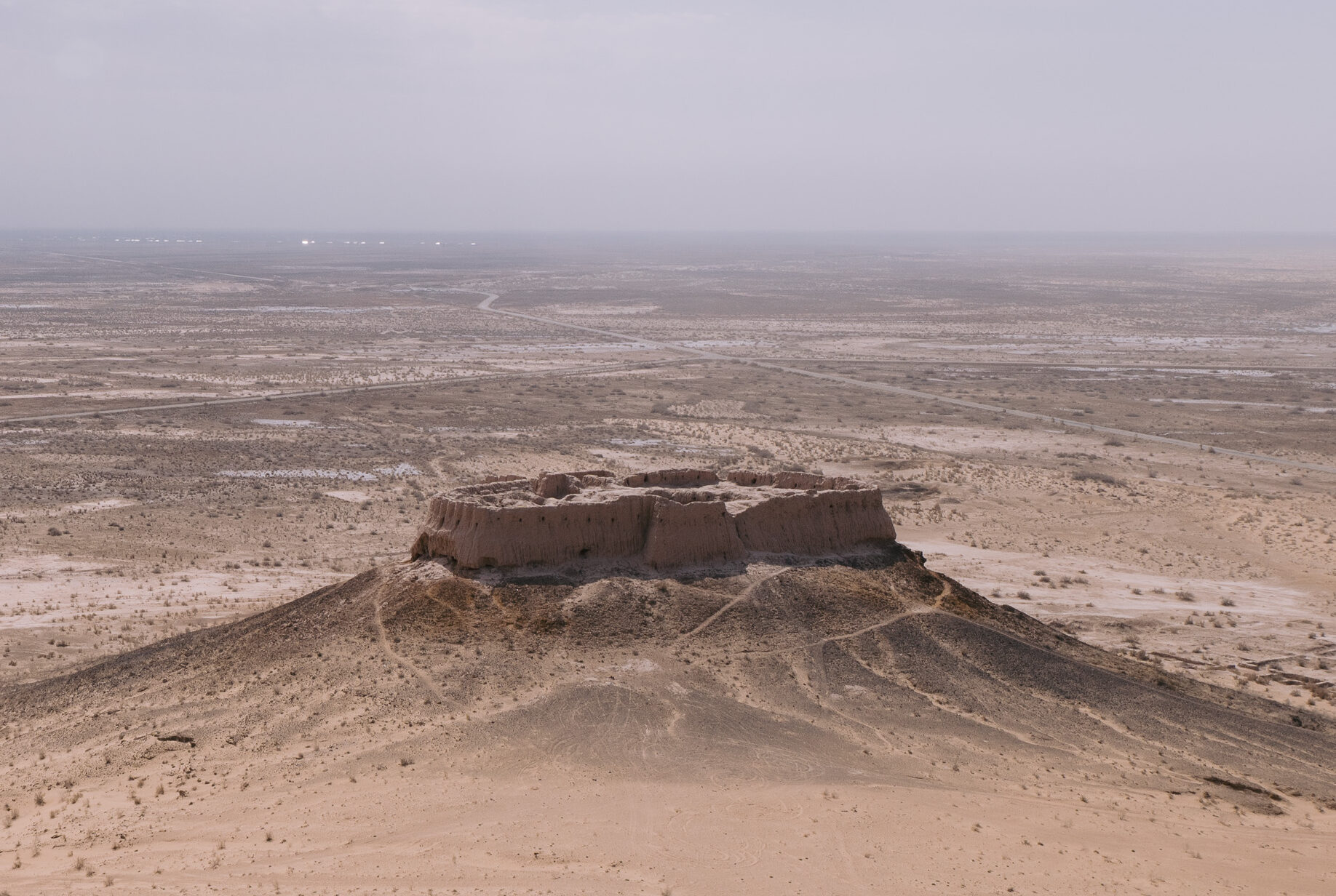
For me, seeing things like this that are so far removed from the main tourist trail lights me up like a kid in a candy store. I couldn’t believe these ruins are just out there, in the middle of nowhere, as forgotten vestiges from the 4th-7th centuries, and a testament to what the Silk Road used to be like when the kingdoms here controlled the trade routes. Standing from the ruins, I could only imagine what life must have been like in its heyday.
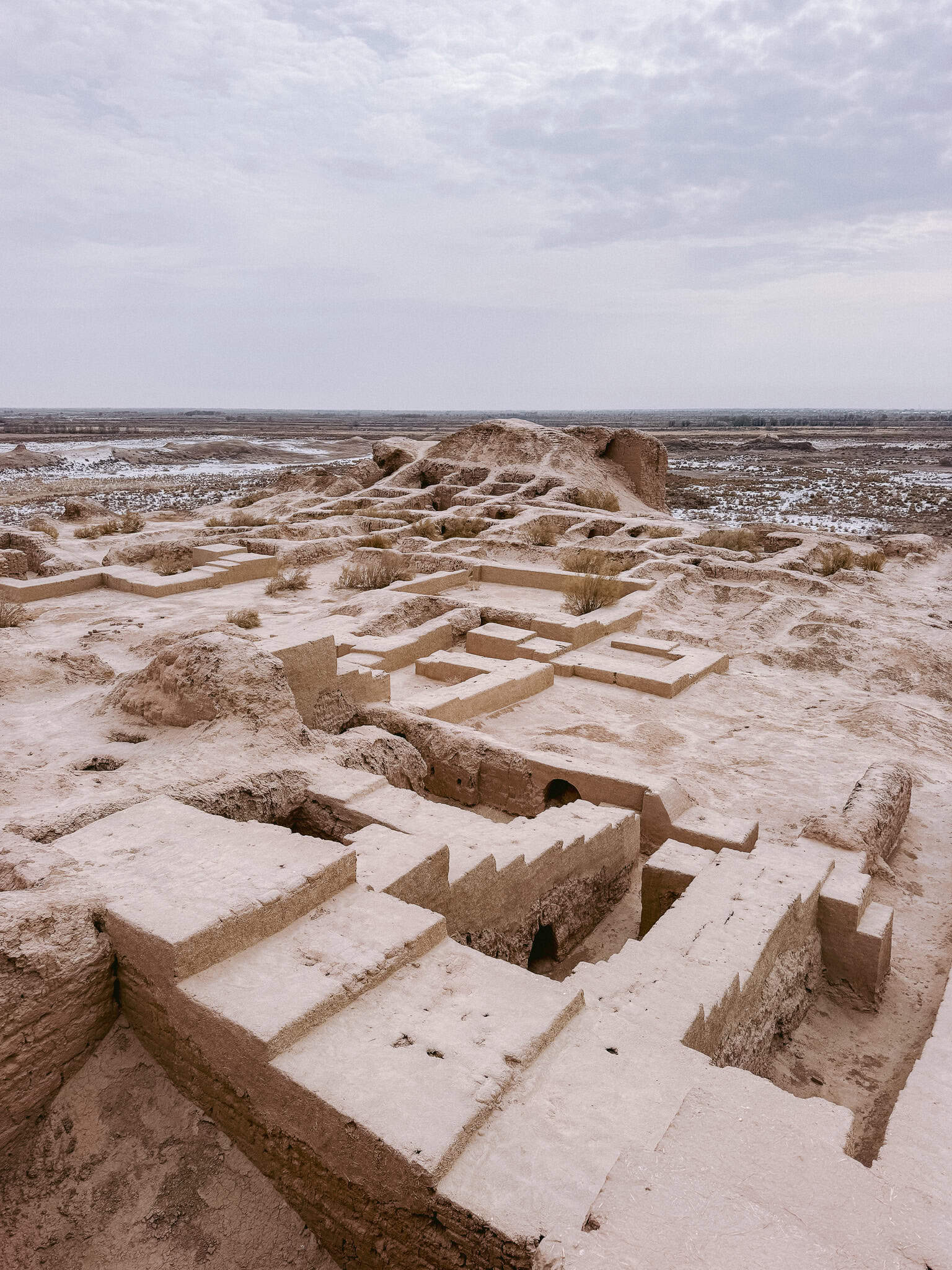
The top fortresses to see are Ayaz Qala (they say there are three separate forts here but I only saw two… still, you’ll want to come for the dramatic photo op of the fortress rising up with the desert all around it) and Toprak Qala (an old Khorezm capital with visible walls and palace ruins… the view of its abundant square rooms from above reminded me of Squid Games).
💡 Tip: There are daily tours that depart from Khiva for the fortresses. Seeing three is enough but the truly adventurous can do a whole circuit and see up to 10+!
🏜️ Want to explore the desert fortresses without the hassle?
These tours handle everything:
🚙 Day trip from Khiva to the desert fortresses with a driver and guide
📸 A photographer led day trip from Khiva to ancient Khorezm
16. Witness the Aral Sea’s Vanishing Shoreline (Karakalpakstan)
If you’ve made it this far, don’t stop with the fortresses. Add on a couple of extra days and visit the Aral Sea too.
Once the 4th largest inland lake in the world, the Aral Sea in Uzbekistan has almost completely vanished in just a generation. In the 1960s, the Soviets diverted its rivers to irrigate cotton fields. The result? Over 90% of the water disappeared, fishing villages collapsed, and the seabed turned into toxic desert. It’s now one of the world’s most infamous man-made environmental disasters.
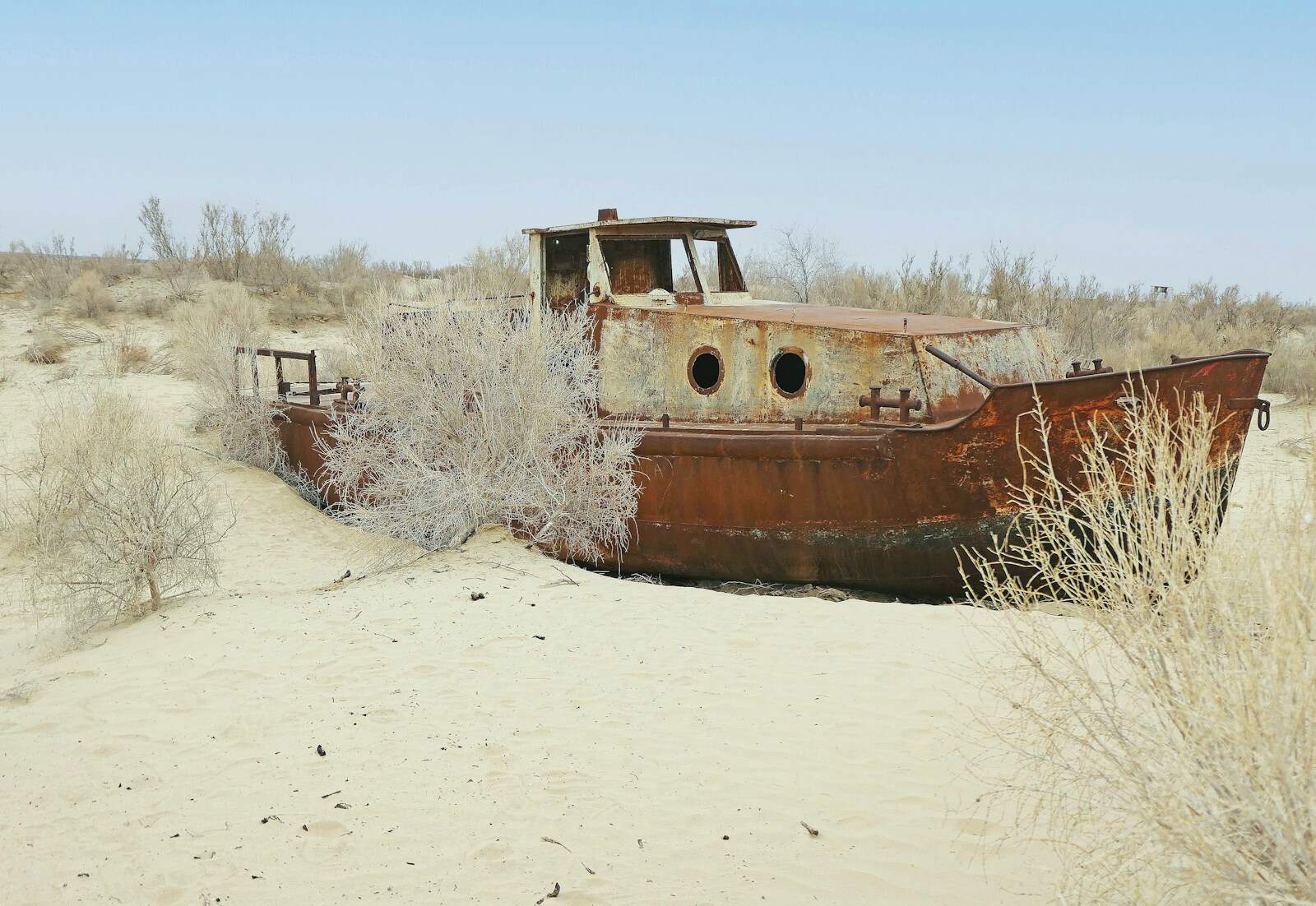
Today you can visit Moynaq, once a thriving port but now home to the eerie Moynaq ship graveyard, where rusting fishing boats sit stranded in the sand. You can also walk along what used to be the sea basin — a stark reminder that humans really shouldn’t mess with nature. Getting there isn’t quick (most tours leave from Khiva or Nukus), but if you make the trek, you’ll be witness to one of the world’s cautionary tales.
🚙 Want to see the Aral Sea without stressing over logistics?
Join one of these top rated tours:
🚘 Day trip from Khiva to the Aral Sea
🌄 Two Day trip to the Aral Sea from Nukus with overnight in yurt
⭐ Two Day trip to the Aral Sea from Khiva
17. Take a Day Trip to Penjakent, Tajikistan (day trip from Samarkand)
Did you know Samarkand is only about an hour from the Uzbekistan–Tajikistan border? So… why not swing into Tajikistan if you’re already in Samarkand, right? 😉
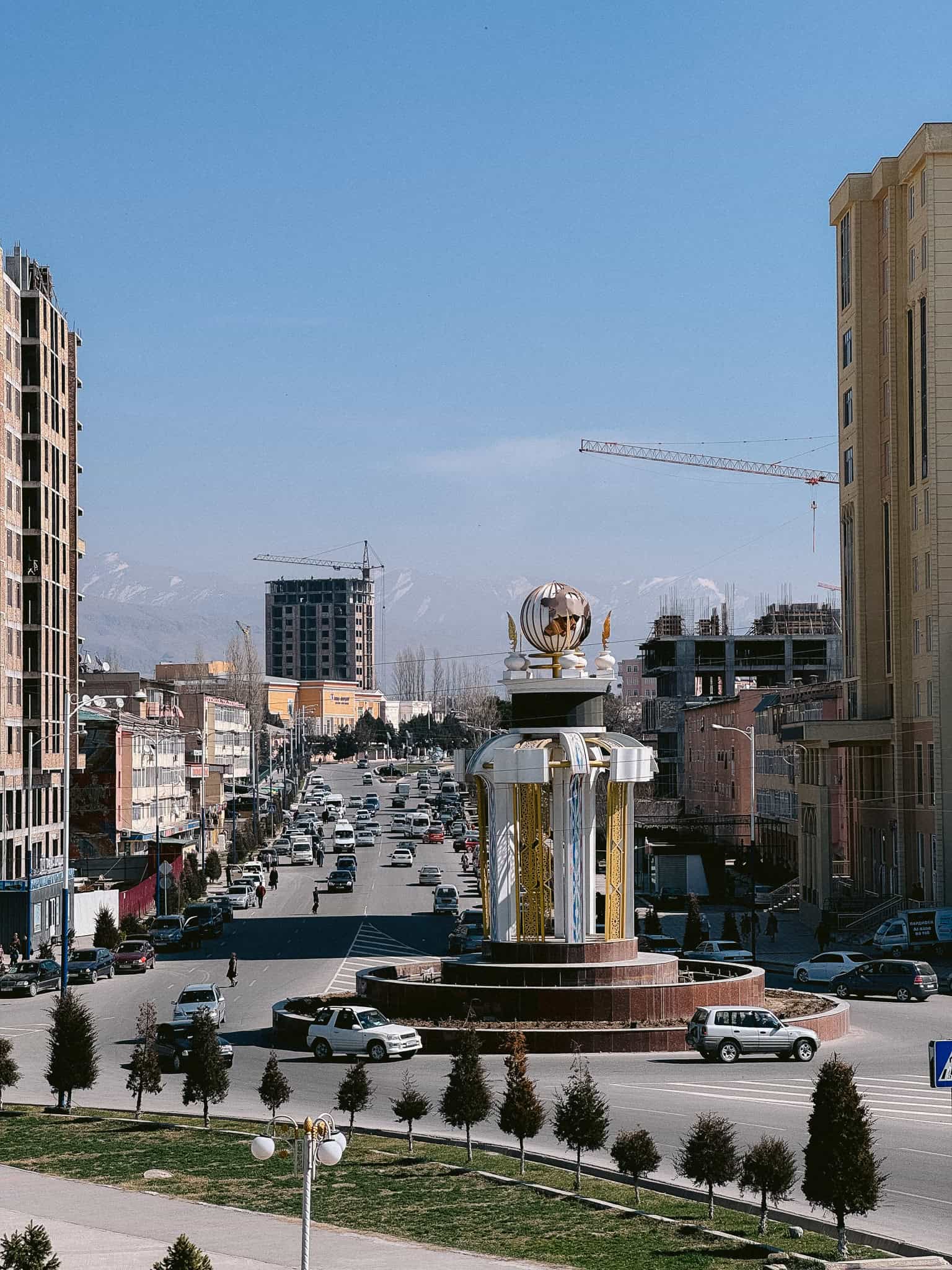
Once you’re across, you can do a Penjakent day trip (also spelled Panjakent) and get a taste of Tajik culture. Penjakent is home to ancient Sogdian ruins (also known as the “Pompeii of Central Asia”), ancient Sarazm ruins, museums, and a lively bazaar that spills into the side streets.
💡 Tip: If you’d rather see Tajikistan’s famous Seven Lakes, you can stop at the Panjakent Bazaar and then head to the lakes as a day trip from Samarkand. That will give you a taste of Tajikistan’s beautiful mountain scenery. Alternatively, you can add extra days and venture deeper into Tajikistan altogether.
🚕 No taxi? No border stress?
These Samarkand→Tajikistan day trips handle everything for you:
🏛️ Explore Panjakent on a private day trip from Samarkand
🏔️ 7 Lakes Tour with Lunch — Scenic mountain escape from Samarkand
🧭 Full 7 Lakes Journey — including a stop at the Sarazm ruins
18. Visit Shahrisabz, Amir Timur’s Birthplace (day trip from Samarkand)
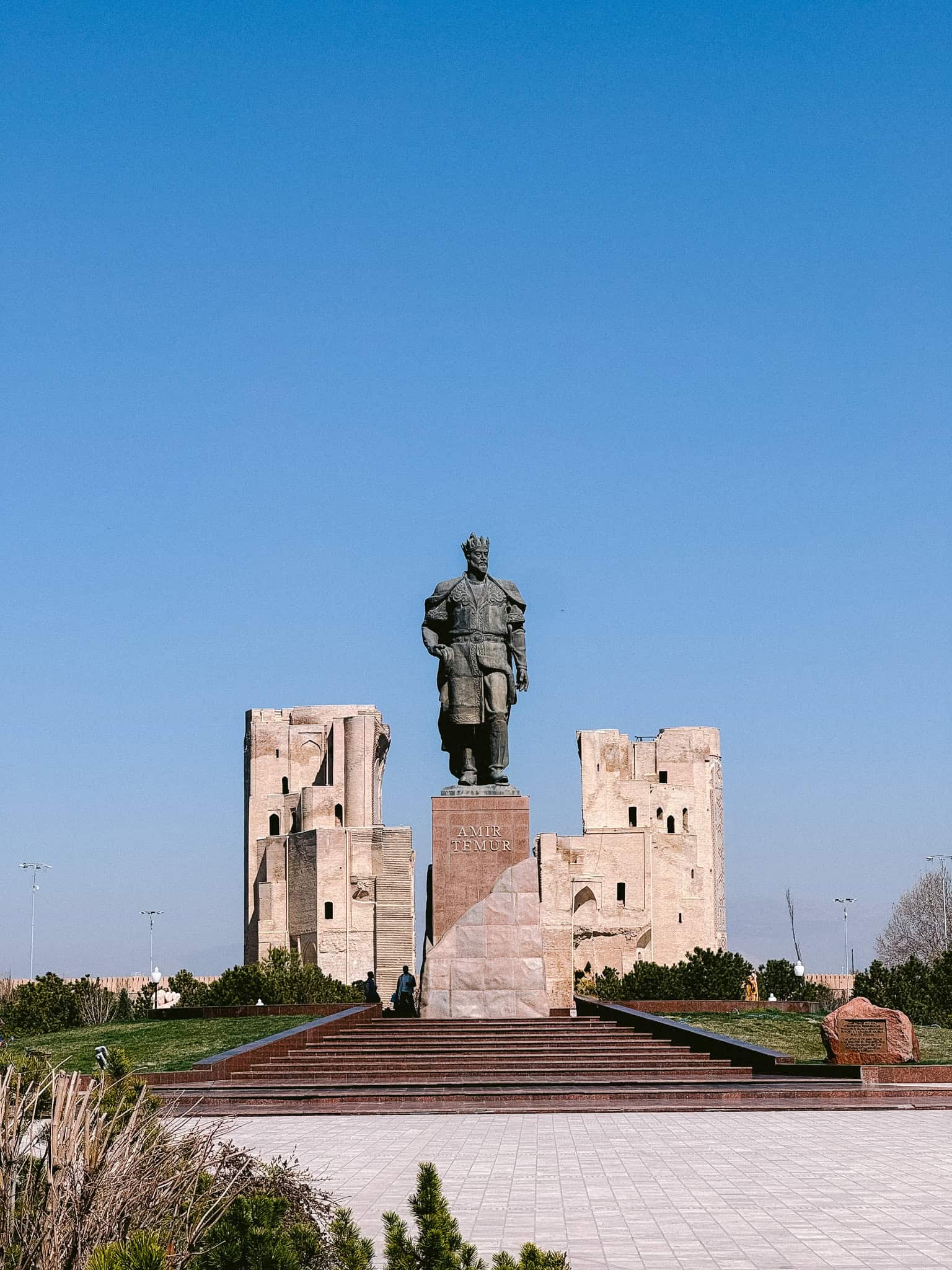
Like I hinted at earlier, the grandeur of the Timurid architecture in Samarkand and the wild success of Timur’s empire is owed to one man: Amir Timur. To learn more about Amir Timur, it’s worth the day trip to Shahrisabz, his hometown, and a UNESCO site.
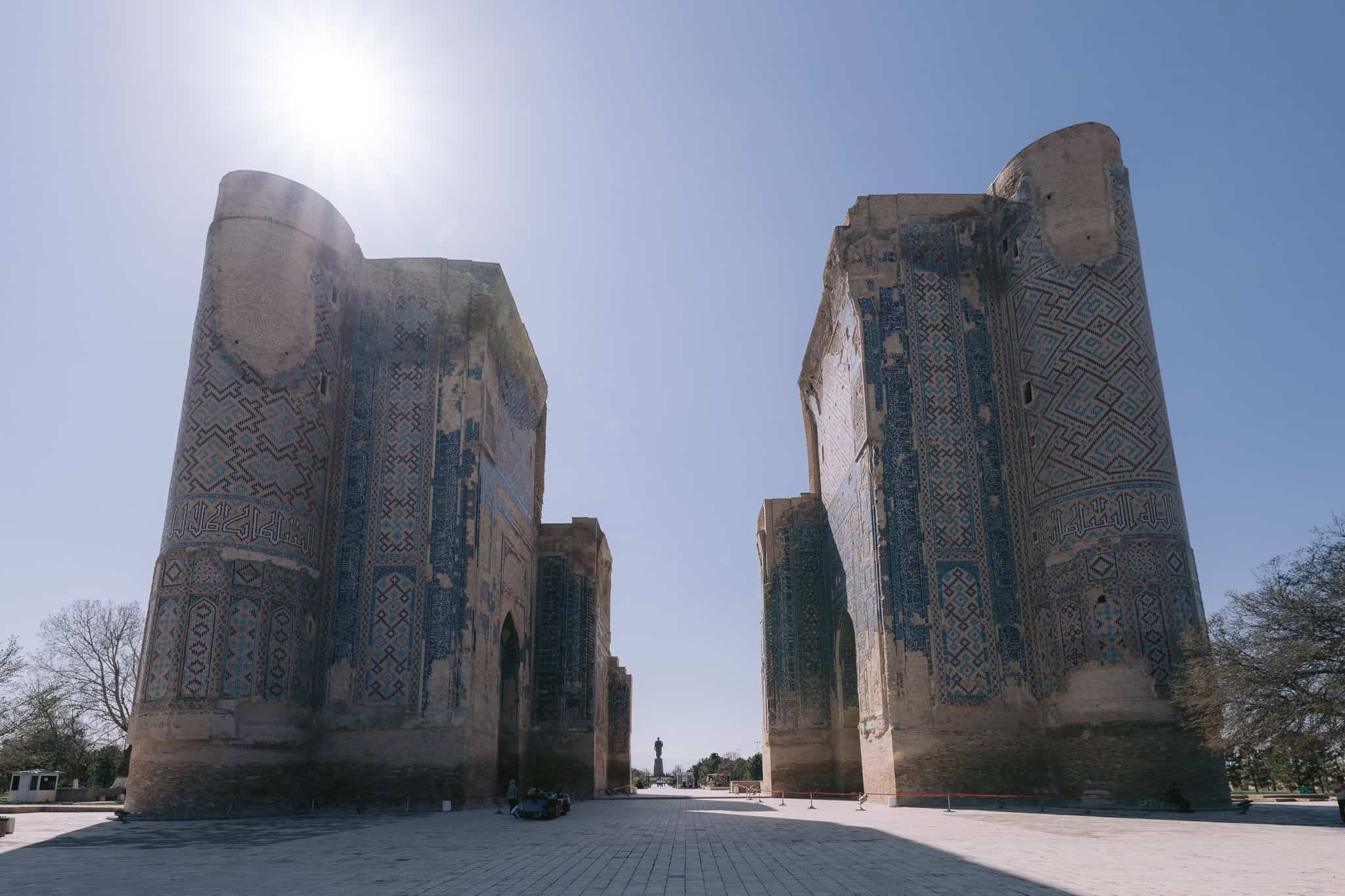
The showstopper here is Ak-Saray Palace, or what’s left of Timur’s 14th-century summer residence. Yes, it’s just two gates today, but HOLY MOLY – they are probably the biggest gates you’ll ever see in your life! Timur clearly used architecture on an epic scale to signal power (and to make sure his enemies thought twice about crossing him).
In the same manicured pedestrian park, you’ll also find turquoise-domed mosques and mausoleums, like the Kok Gumbaz Mosque and the Dorus Saodat complex. They give you a real sense of Shahrisabz’s former grandeur.
And don’t forget the journey itself — the scenic mountain road between Samarkand and Shahrisabz is worth the trip alone, with plenty of photo stops along the way.
💡 Tip: If you get car sick easily, take nausea pills or wear seasickness bands. The mountain roads are windy.
🕌 Thinking of Visiting Shahrisabz?
Here some day trip options from Samarkand:
🏛️ Explore Shahrisabz’s ruins + local bazaar (guided day trip)
🚗 Scenic private drive to Shahrisabz via mountain pass
Atmosphere and Everyday Life
19. Take in the Night Scene at Bukhara
I already mentioned some sites in Bukhara to check out, but if you’re there, don’t skip a night stroll! Bukhara comes alive after dark, especially around Lyabi-Hauz, the little pond surrounded by restaurants and teahouses.
This is Lyabi-Hauz in the day:
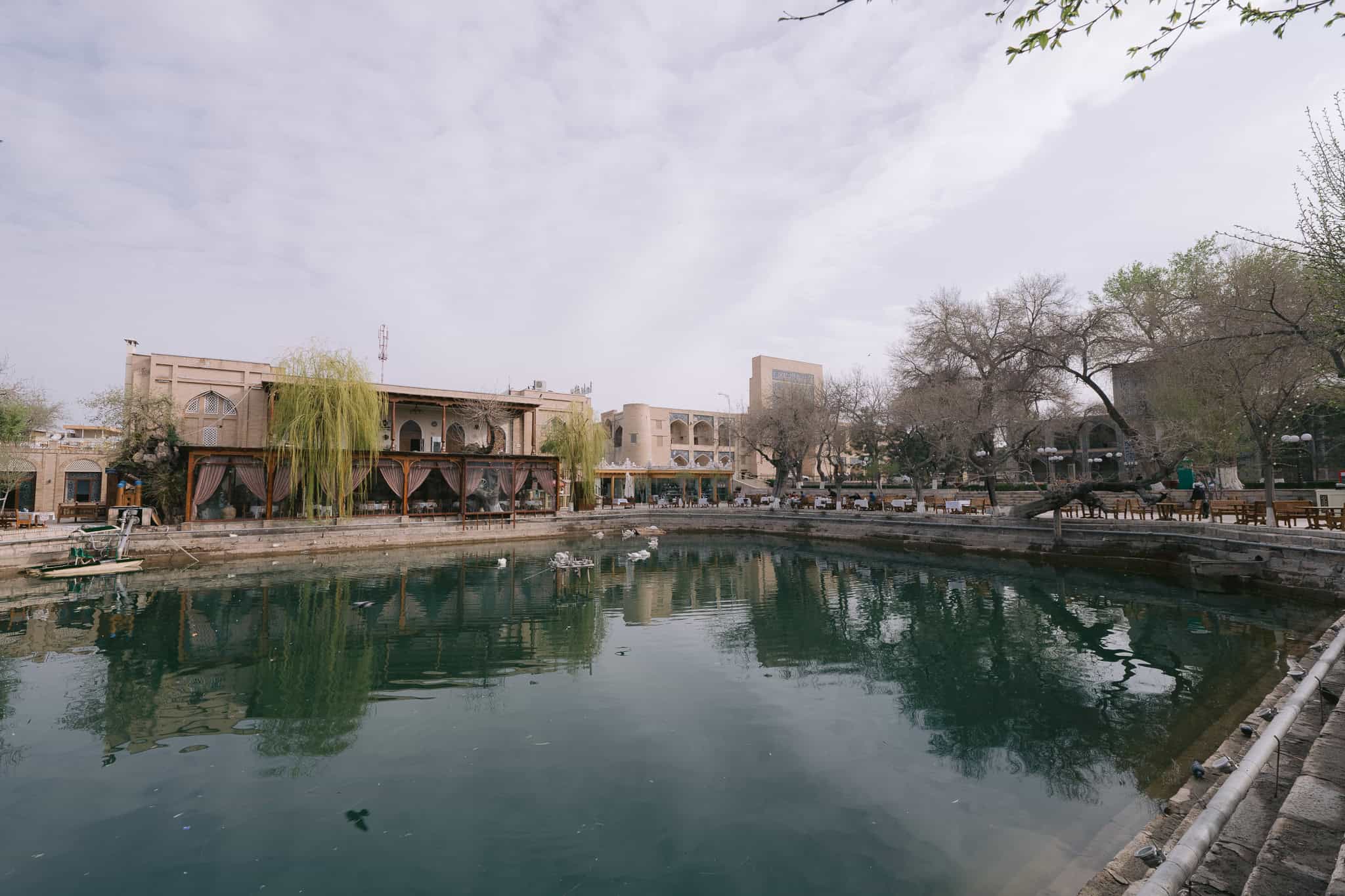
When I wandered here at night, there was live music, al fresco dining, families strolling, and warm lights reflecting off the trees and water. Somehow, Bukhara blends its ancient Silk Road setting with a modern, lively vibe, and it just works.
I didn’t take any night pics but here’s a video I found that shows you how bustling the night scene is in Bukhara:
Lastly, if you’re wondering how safe it is to walk around at night, check out my post on how safe I felt in Uzbekistan as a solo female traveling independently.
20. Stroll Through Samarkand’s Siab Bazaar
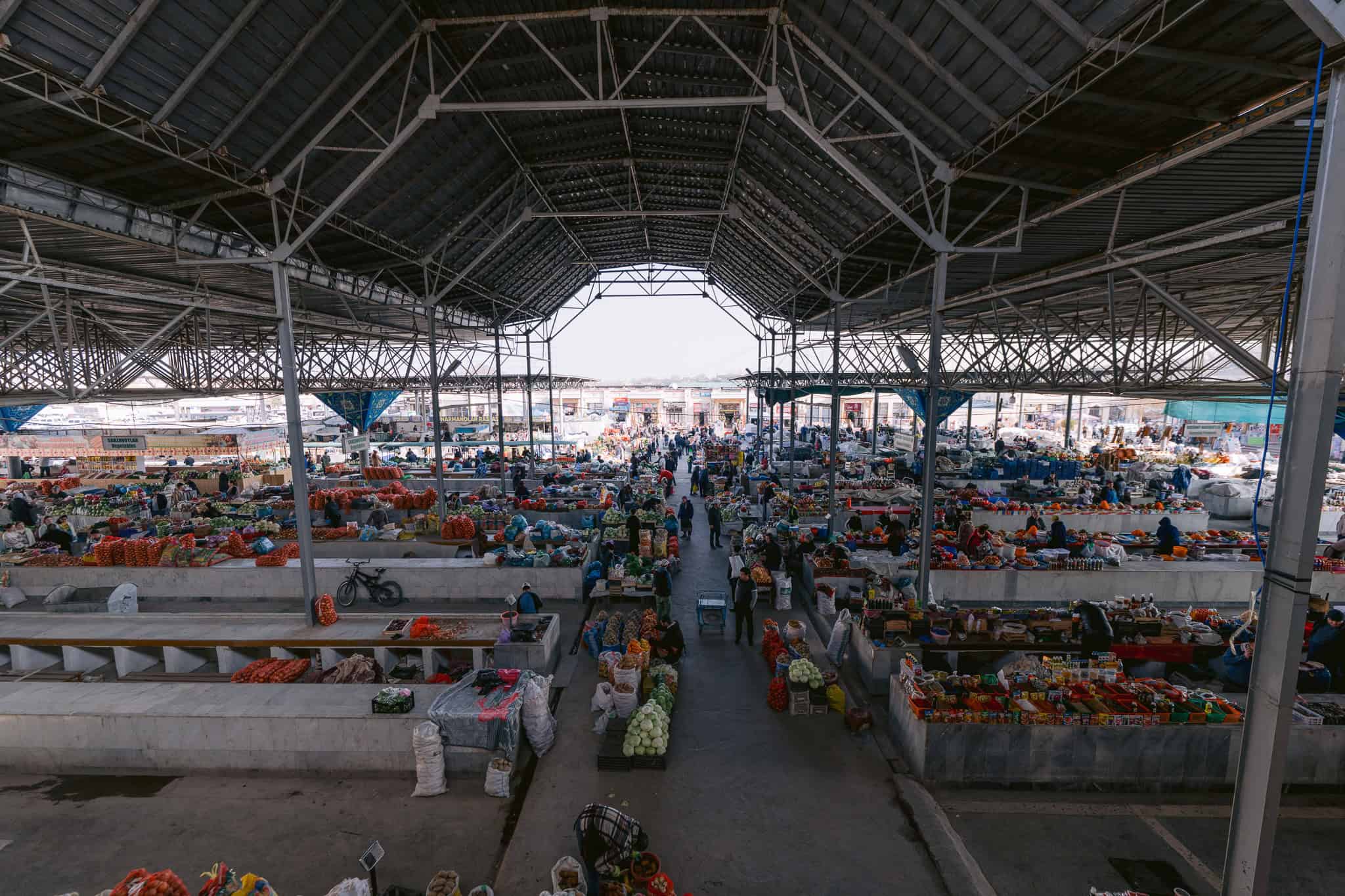
Who doesn’t love a good market when you’re traveling? Siab Bazaar in Samarkand is the city’s main open market: rows of tables piled high with fruits, vegetables, spices, and stacks of Samarkand’s trademark round bread. The air is filled with the smell of fresh herbs and grilled snacks, and vendors call out as locals weave through the aisles.
It’s a chaotic, colorful slice of daily life and the perfect place to grab some snacks as you continue exploring Samarkand. Plus, Siab Bazaar is around the corner from Bibi-Khanym Mosque so it’s easy to combine the two.
21. See Khiva at Dawn Before the Crowds Arrive
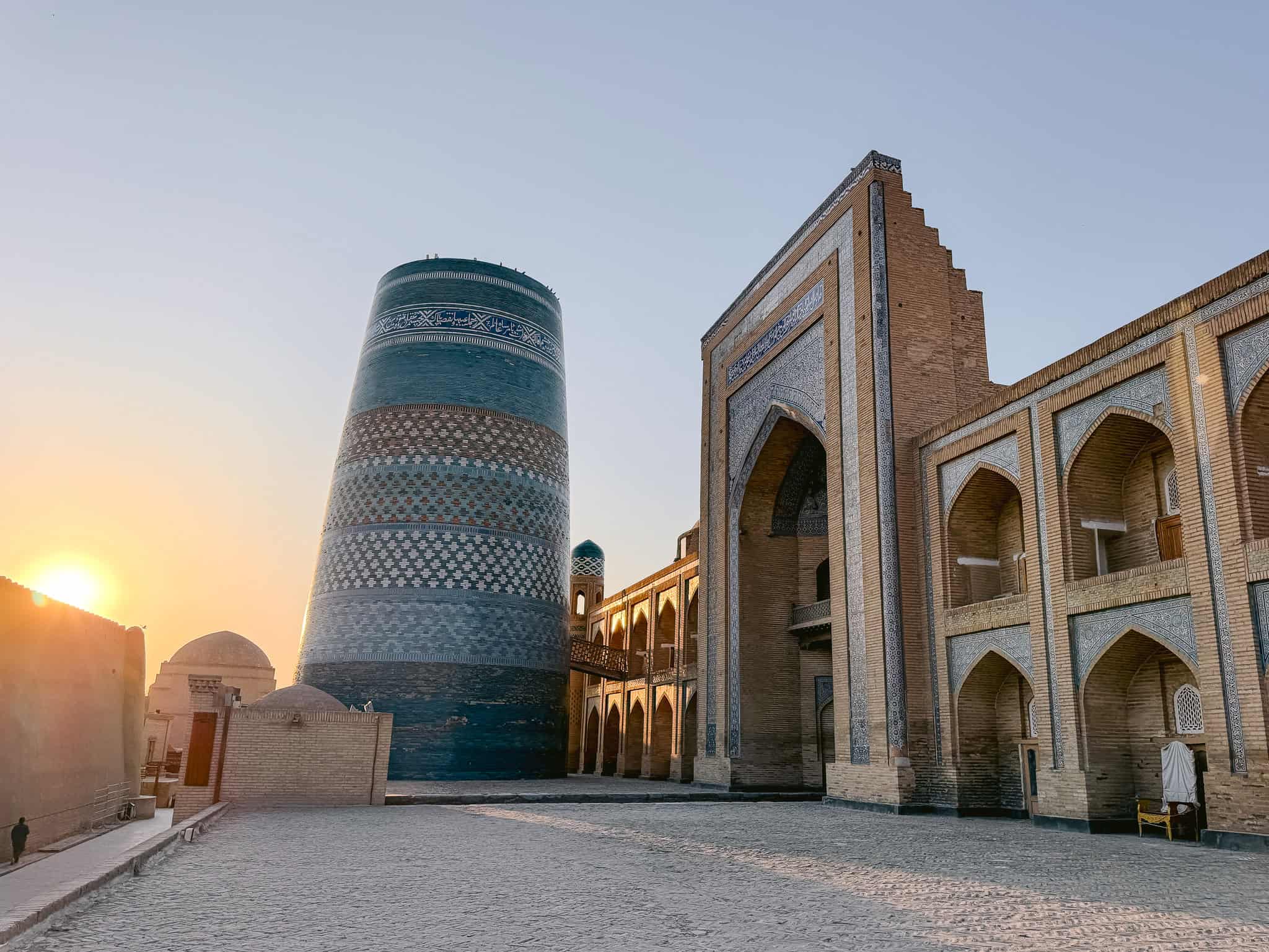
If you truly want to experience the magic of Khiva at sunrise — tranquil, crowd-free, and filled only with birdsong — morning is the best time to visit. I walked around at dawn and it felt like I had the entire old town to myself. The first rays of sunlight slowly lit up the madrasas and mosques, bathing them in a warm, golden glow.
You might also catch locals starting their day: a shopkeeper sweeping his doorstep, the call to prayer drifting through the air. These are the small moments that make Khiva feel alive even in its quietest hour. It’s the perfect time to meander and soak in a side of the city most tourists miss.
💡 Tip: Sunrise is also one of the best times to photograph Khiva. The soft light makes the turquoise domes and mudbrick walls absolutely glow.
22. Stay in a Family-Run Guesthouse
Last but not least on this list of things to do in Uzbekistan is to stay in a family-run guesthouse. Not only are they a better deal than bigger hotels, but they also give you a glimpse of Uzbek hospitality you won’t find anywhere else.
I stayed at a guesthouse in Khiva that had priceless rooftop views, a quiet location inside the city walls, and a traditional breakfast of fresh bread, tea, homemade jam, and an assortment of new side dishes I hadn’t seen anywhere else. My host didn’t speak much English, but he warmly welcomed me — and honestly, figuring out how to communicate was half the fun.
🏜️ Want to skip the planning?
Here are the top-rated tours for every experience I mentioned above — just pick one and go!
🕌 Silk Road City Tours:
🏛️ Explore Shahrisabz’s ruins + local bazaar (guided day trip)
🚗 Scenic private drive to Shahrisabz via mountain pass
🏜️ Nature & Adventure:
🚙 Day trip from Khiva to the desert fortresses with a driver and guide
📸 A photographer led day trip from Khiva to ancient Khorezm
🚘 Day trip from Khiva to the Aral Sea
🌄 Two Day trip to the Aral Sea from Nukus with overnight in yurt
⭐ Two Day trip to the Aral Sea from Khiva
🌄 Cross-Border Day Trips:
🏛️ Explore Panjakent on a private day trip from Samarkand
🏔️ 7 Lakes Tour with Lunch — Scenic mountain escape from Samarkand
🧭 Full 7 Lakes Journey — including a stop at the Sarazm ruins
🧳 Want Everything Pre-Planned Instead?
If scrolling through tours feels overwhelming, grab my Easy Guide to Uzbekistan — it includes:
✅ A starting itinerary with all tips to help you customize your trip from there
✅ All transfer information within the country and guide information
✅ Costs, contacts & booking links in one place
🎁 Bonus Insider Perk: The Uzbekistan tour guide I used will give you 20% off your booking if you mention Diana sent you. He not only does day trips but provides tours around the whole country!
👉 Download it here and start packing instead of planning.
Final Reflections on Uzbekistan’s Sensory Journey
There you have it — 22 things to do in Uzbekistan that give you a taste of its Silk Road grandeur, everyday culture, and off-the-tourist-trail surprises. I had no idea it’d end up being this long… but if you haven’t figured it out by now, I don’t do “ordinary”. 😀
What I loved most about Uzbekistan is how it mixes the iconic (like Registan) with the unexpected (like Khiva at dawn or stumbling on a fortress in the desert). Every stop feels different yet connected. And, while it’s nothing like your typical mass tourism site, it’s surprisingly doable to get around.
✈️ Love the list? Want zero guesswork when planning?
I converted every “thing to do” on this list into a step-by-step travel plan — with exact routes, hotel picks, transport links & budget guidance — and packaged it into my downloadable Uzbekistan Travel Guide.
Tap into:
✅ The full 11-day Silk Road itinerary (optimized for comfort & safety)
✅ All train / Yandex / border logistics laid out
✅ Hotels I trusted + real reviews
✅ Visa walkthrough, packing lists & local tips
✅ My personal money-saving hacks — and a 20% tour discount in the guide
👉 Grab the guide here and get the full blueprint so you can stop researching and start exploring.

